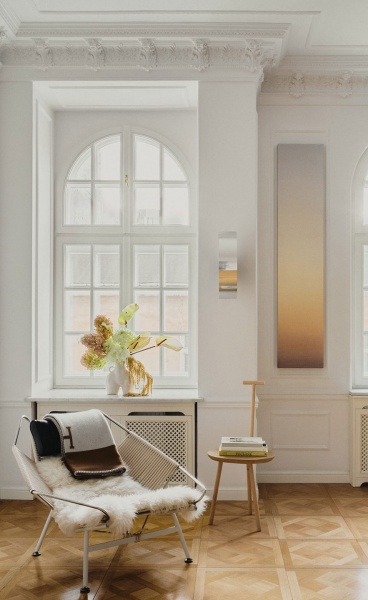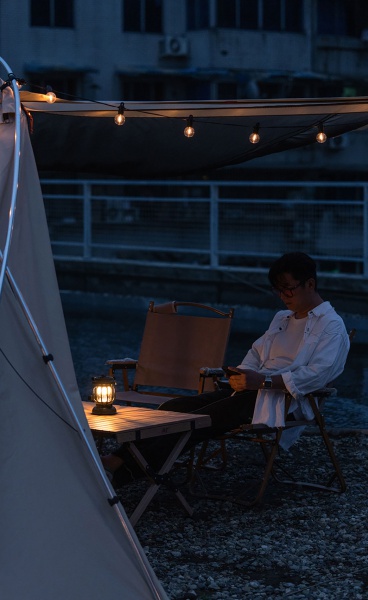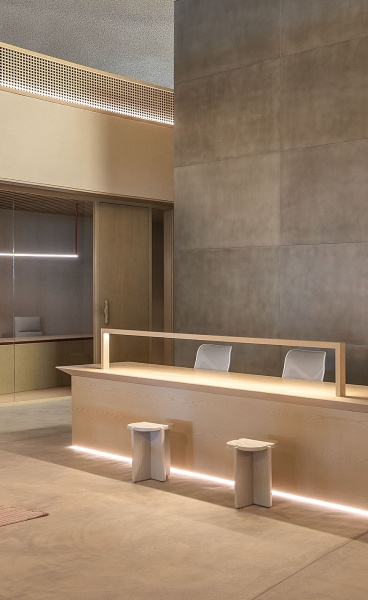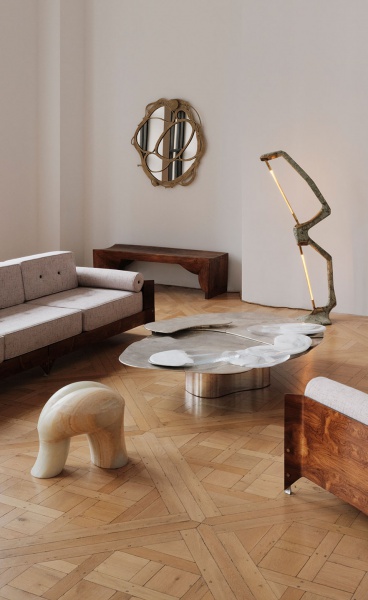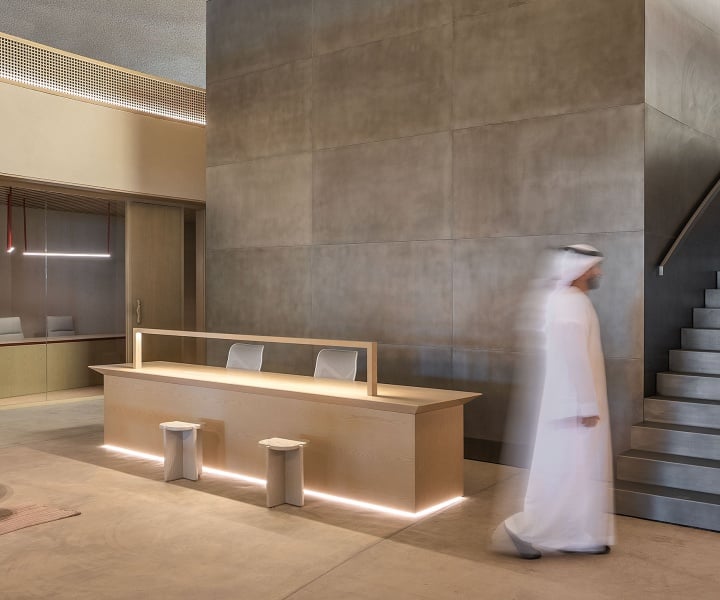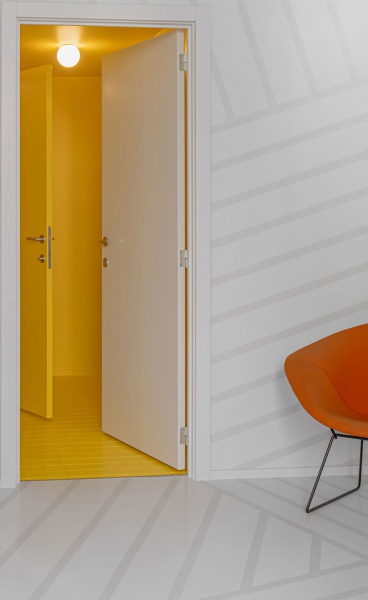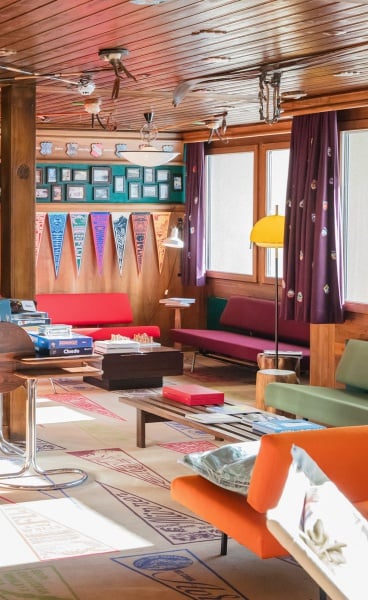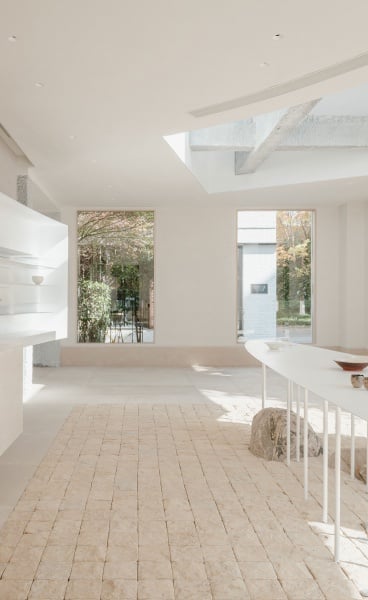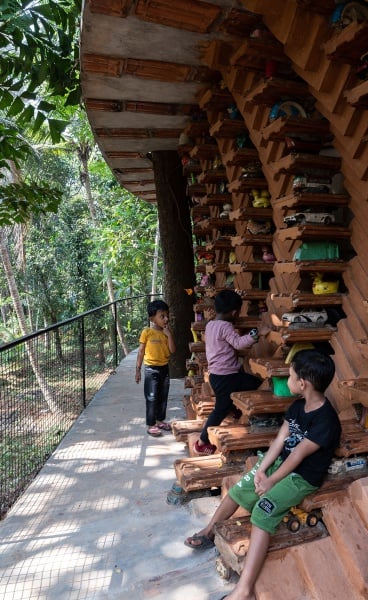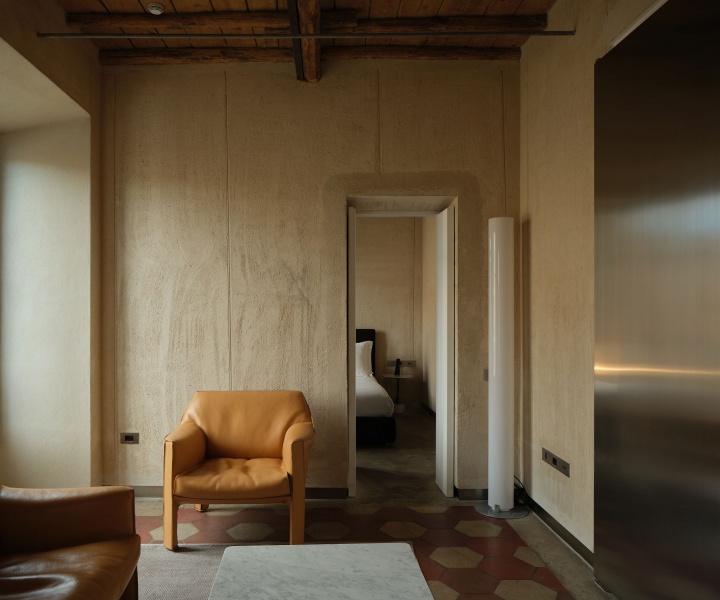| Detailed Information | |||||
|---|---|---|---|---|---|
| Project Name | Rombo III | Location |
Mexico City
Mexico | Architect | Miguel Angel Aragonés |
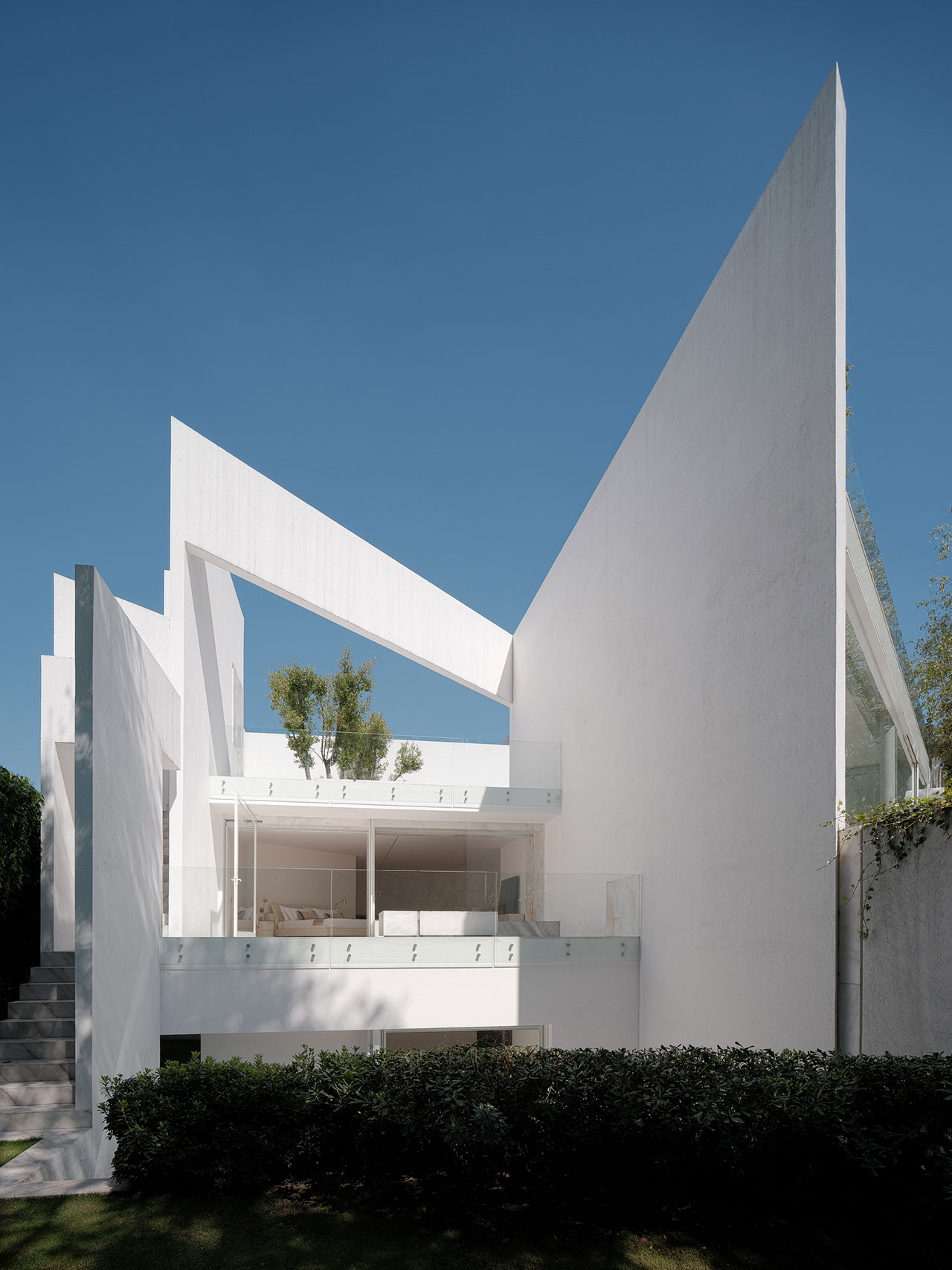
Photo by Joe Fletcher.

Photo by Joe Fletcher.
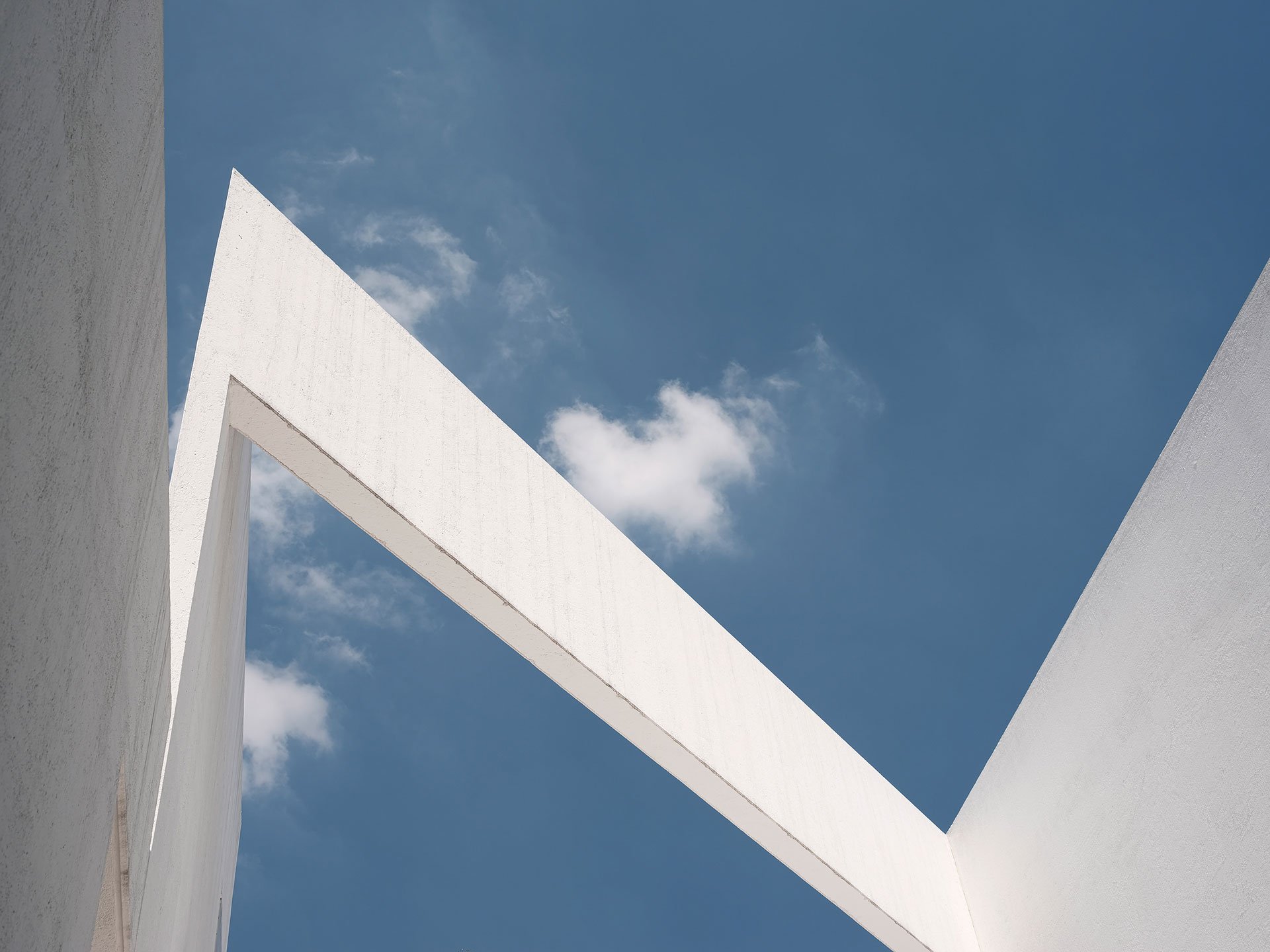
Photo by Joe Fletcher.
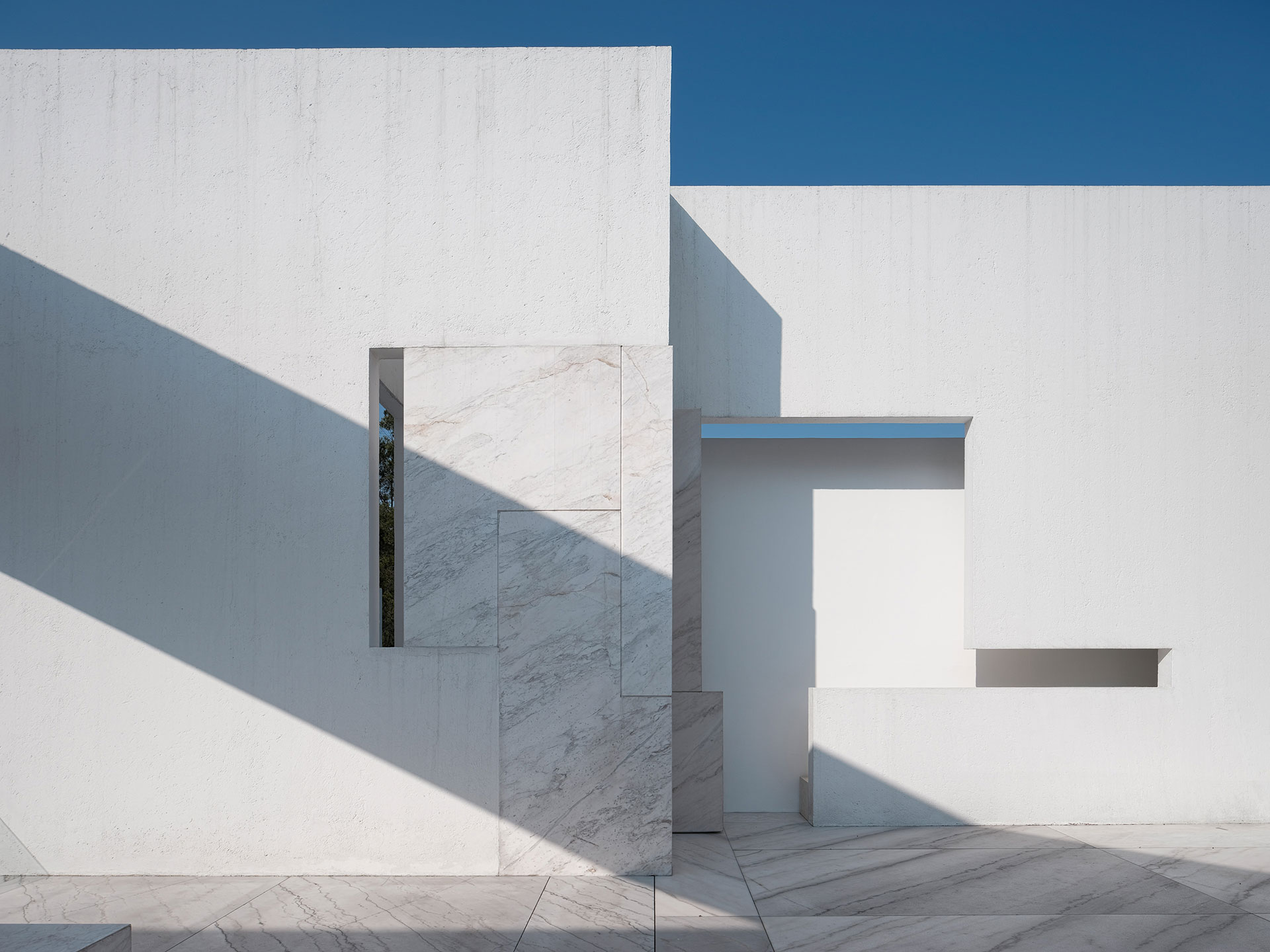
Photo by Joe Fletcher.

Photo by Joe Fletcher.
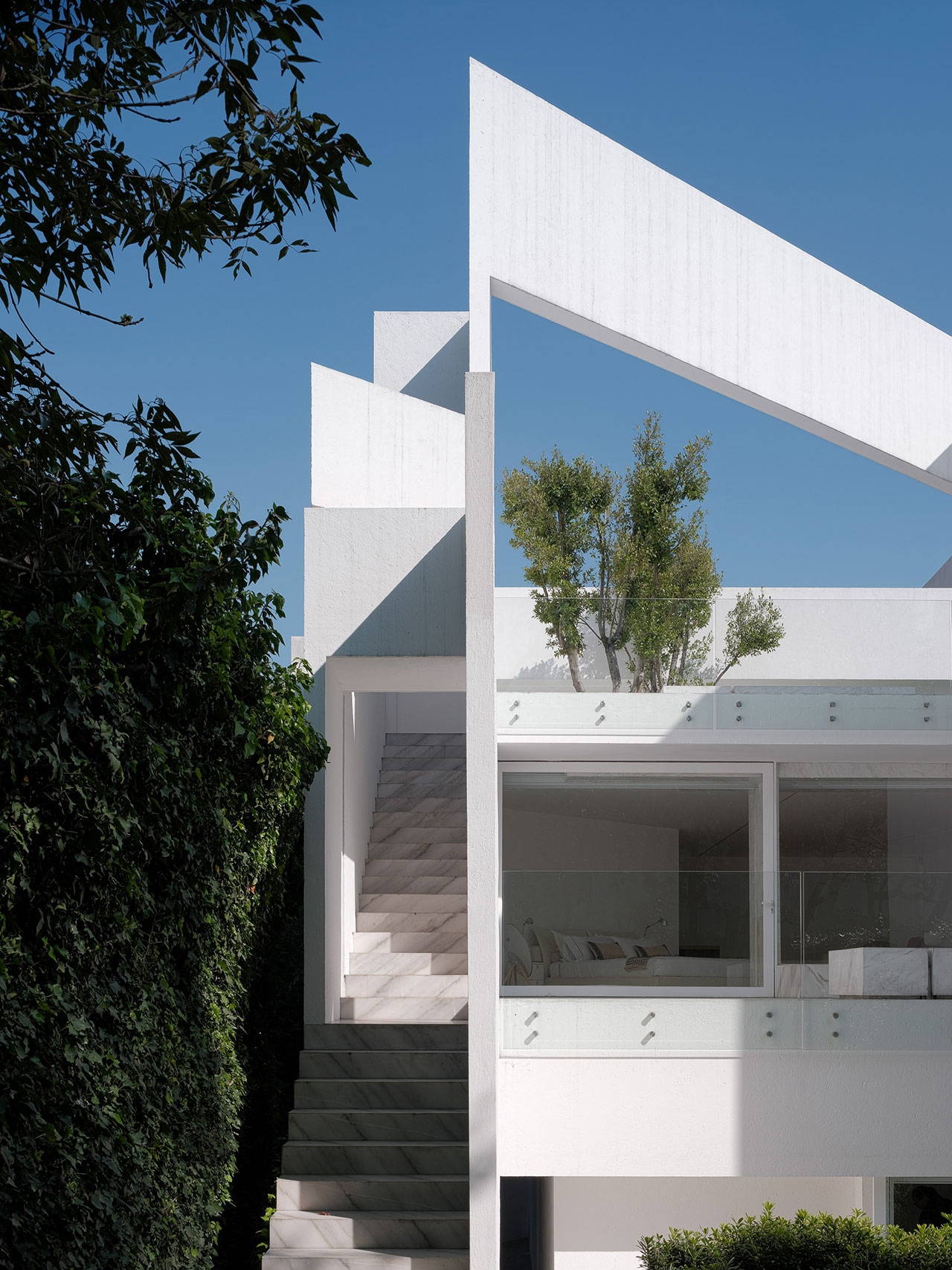
Photo by Joe Fletcher.
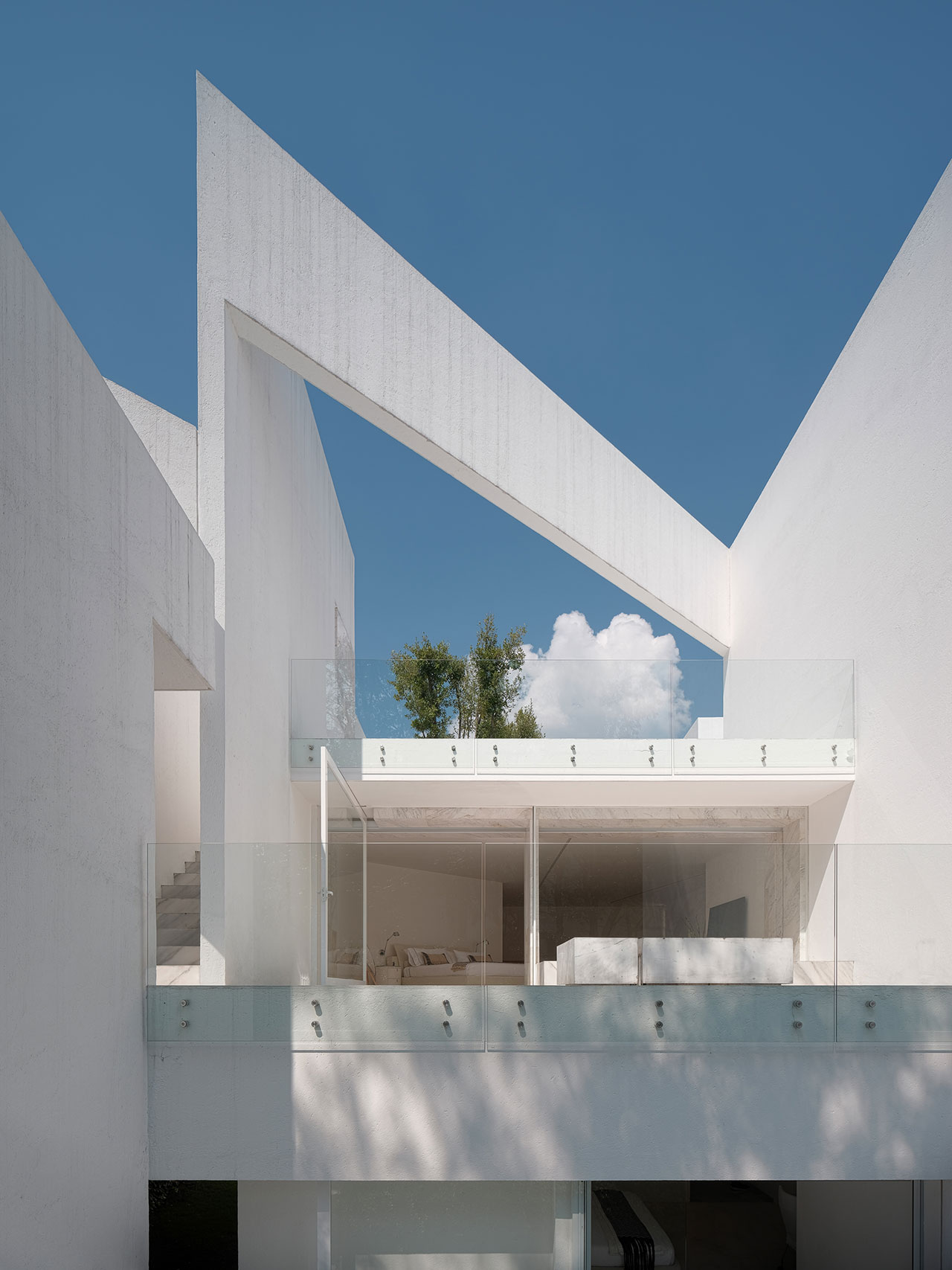
Photo by Joe Fletcher.
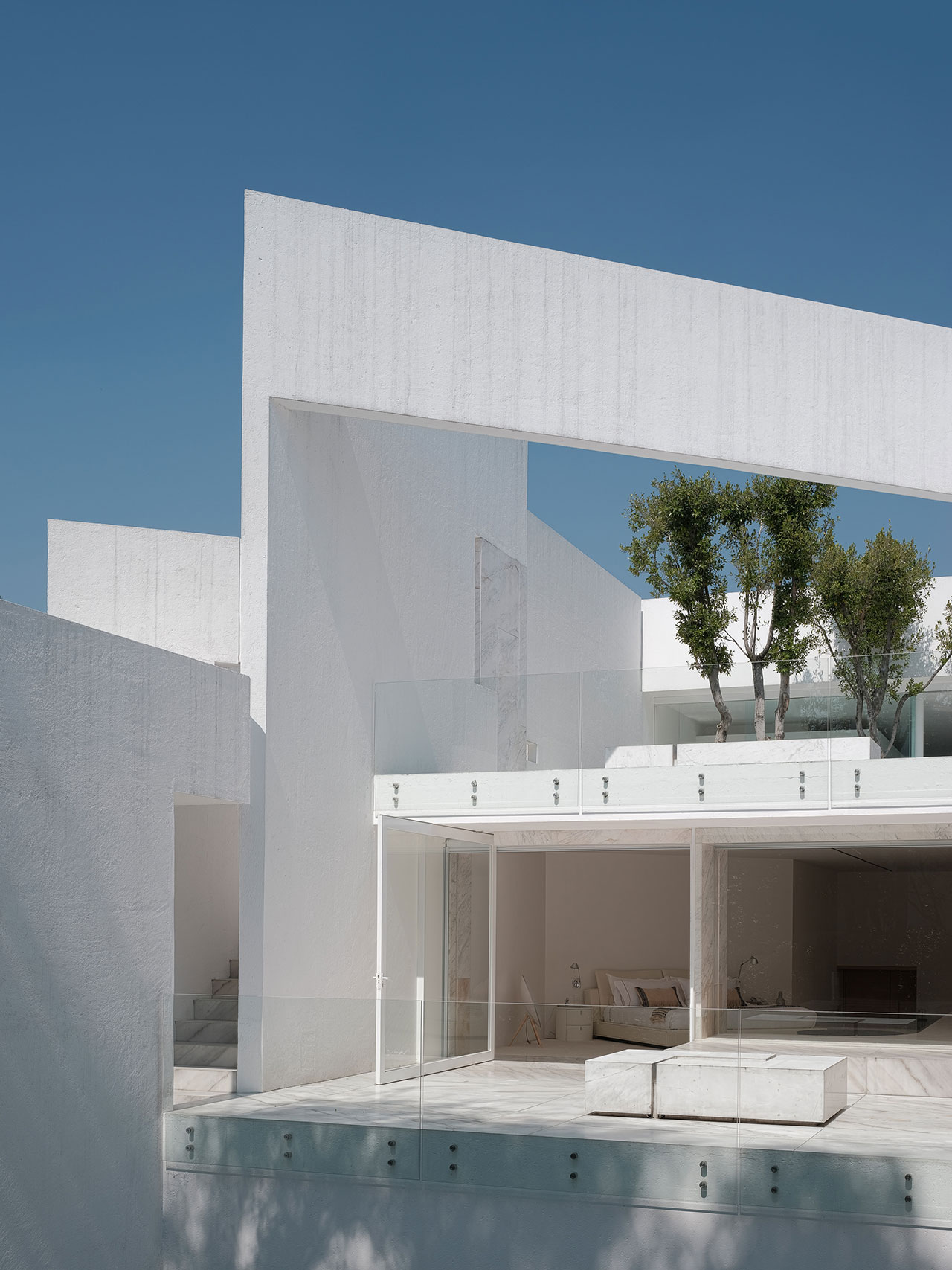
Photo by Joe Fletcher.
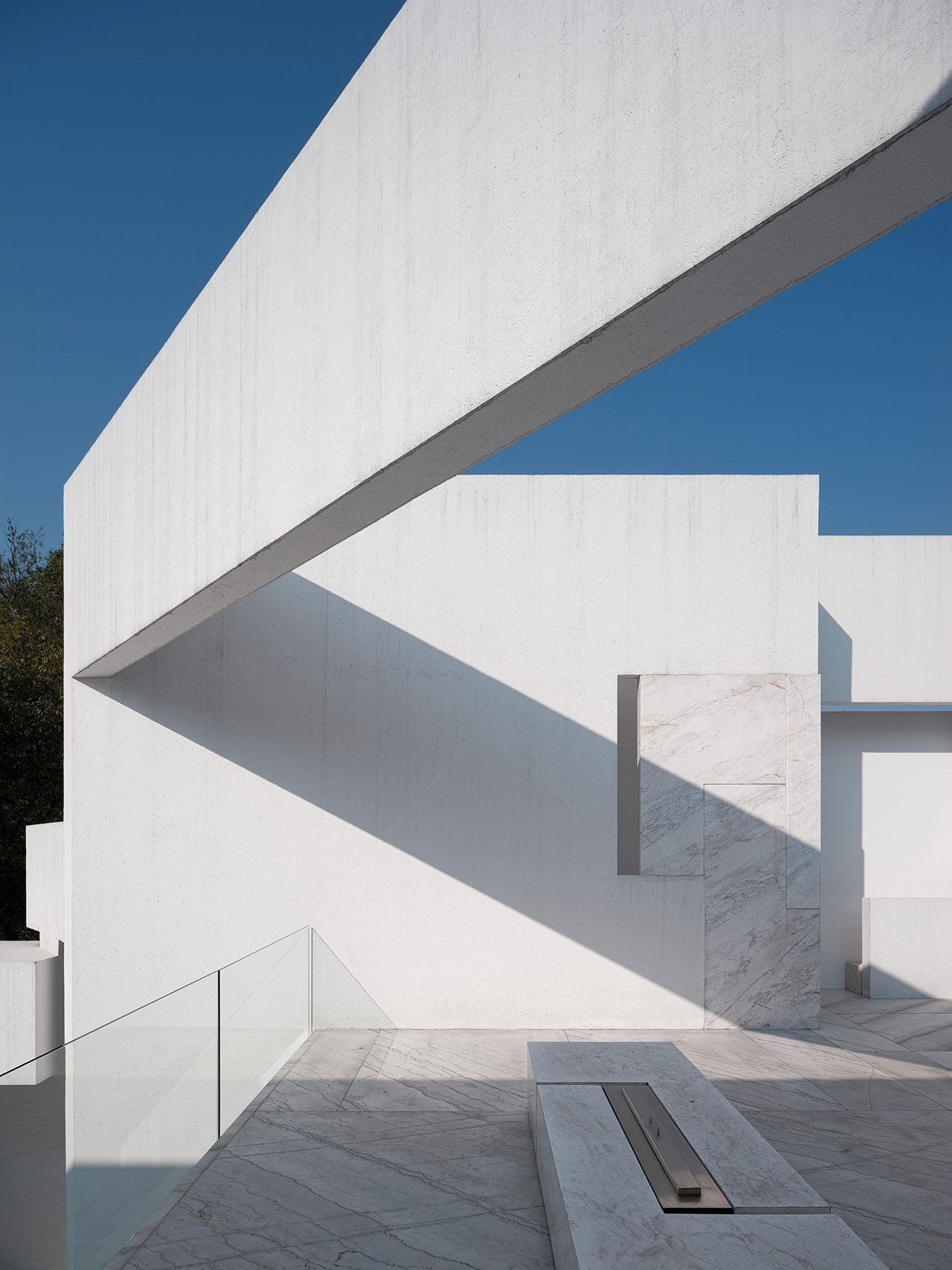
Photo by Joe Fletcher.
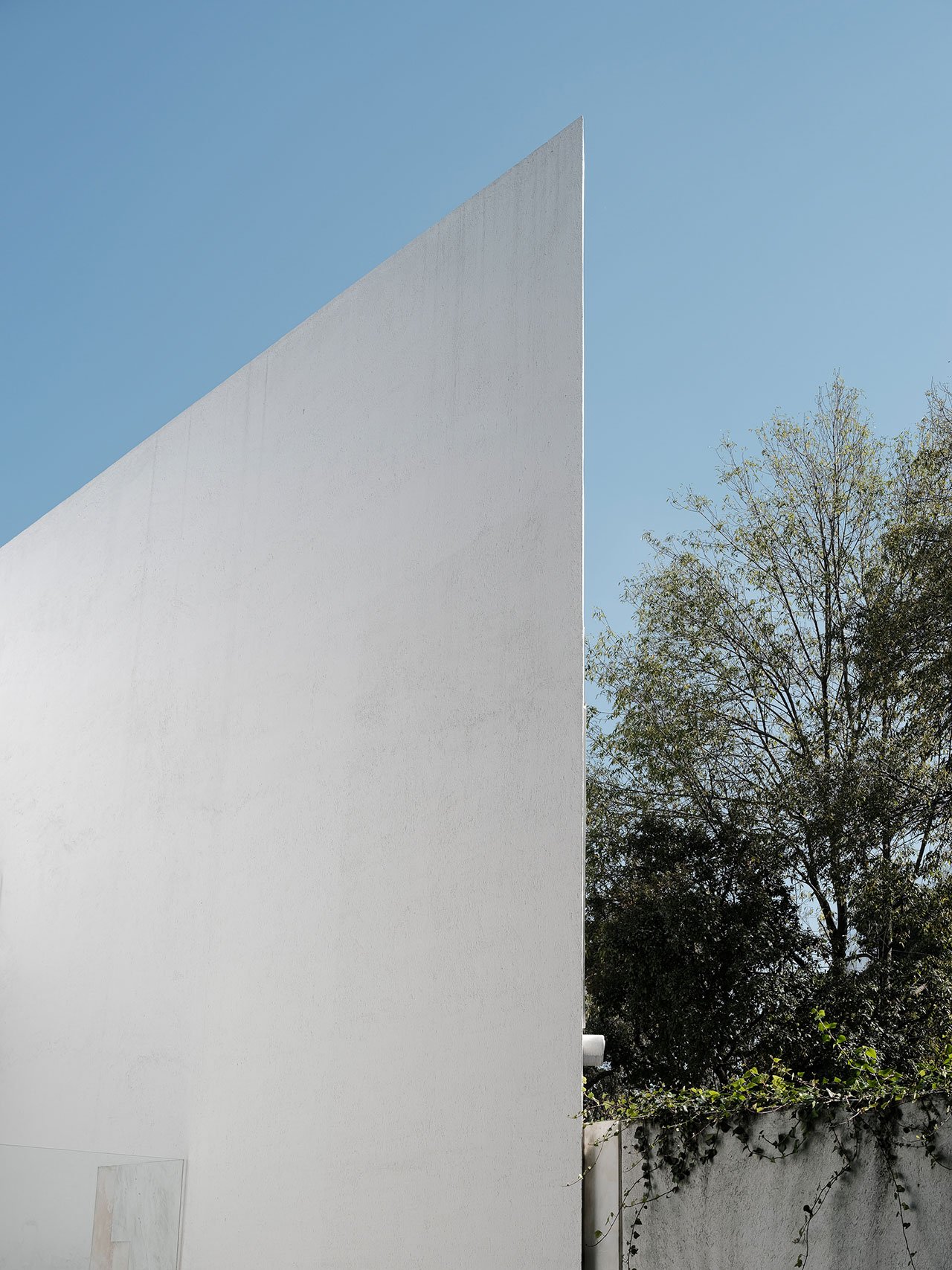
Photo by Joe Fletcher.
Designed by Miguel Ángel Aragones as his home, Rombo III is part of a group of four buildings comprising three houses and the architect’s studio. Having to contend with a sloped, elongated plot, Aragones has combined a stepped configuration, which minimizes the building’s volume while maximizing natural light penetration, with an asymmetrical design of interlocking vertical planes and angular volumes that optimizes the views out of the house while ensuring privacy.
Unfolding over three levels, with the entrance located on the middle floor, the abstract geometry of the exterior is carried on inside where a series of geometrical cut-outs, parapets, pillars and in-built furniture create a spatial narrative while facilitating wide sight lines and forging visual connections across the building. At the heart of the house, an atrium connects all three levels through a sculptural staircase that seems to float inside the space and brings daylight down to the lower floor where the guest bedrooms are located.
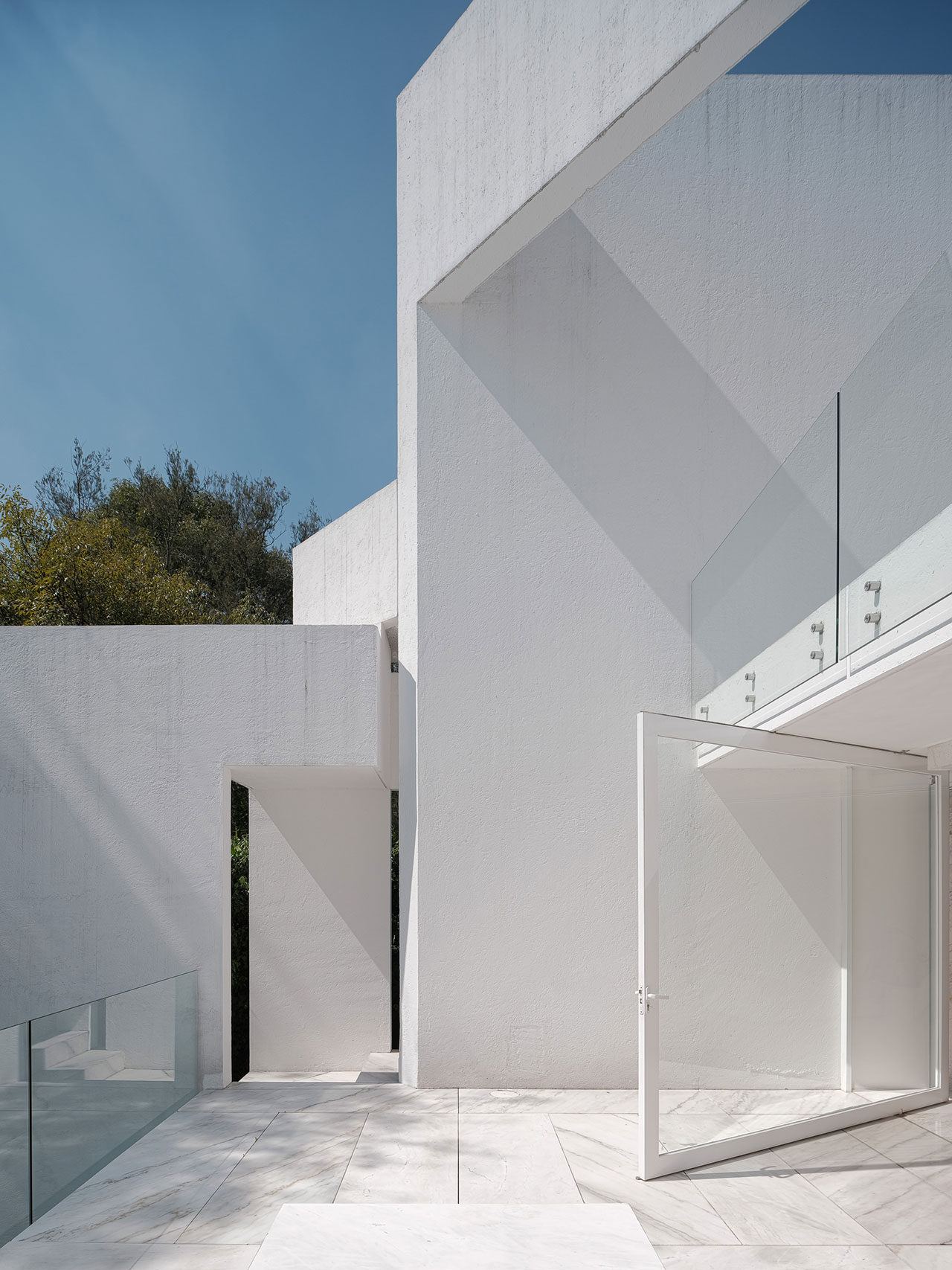
Photo by Joe Fletcher.
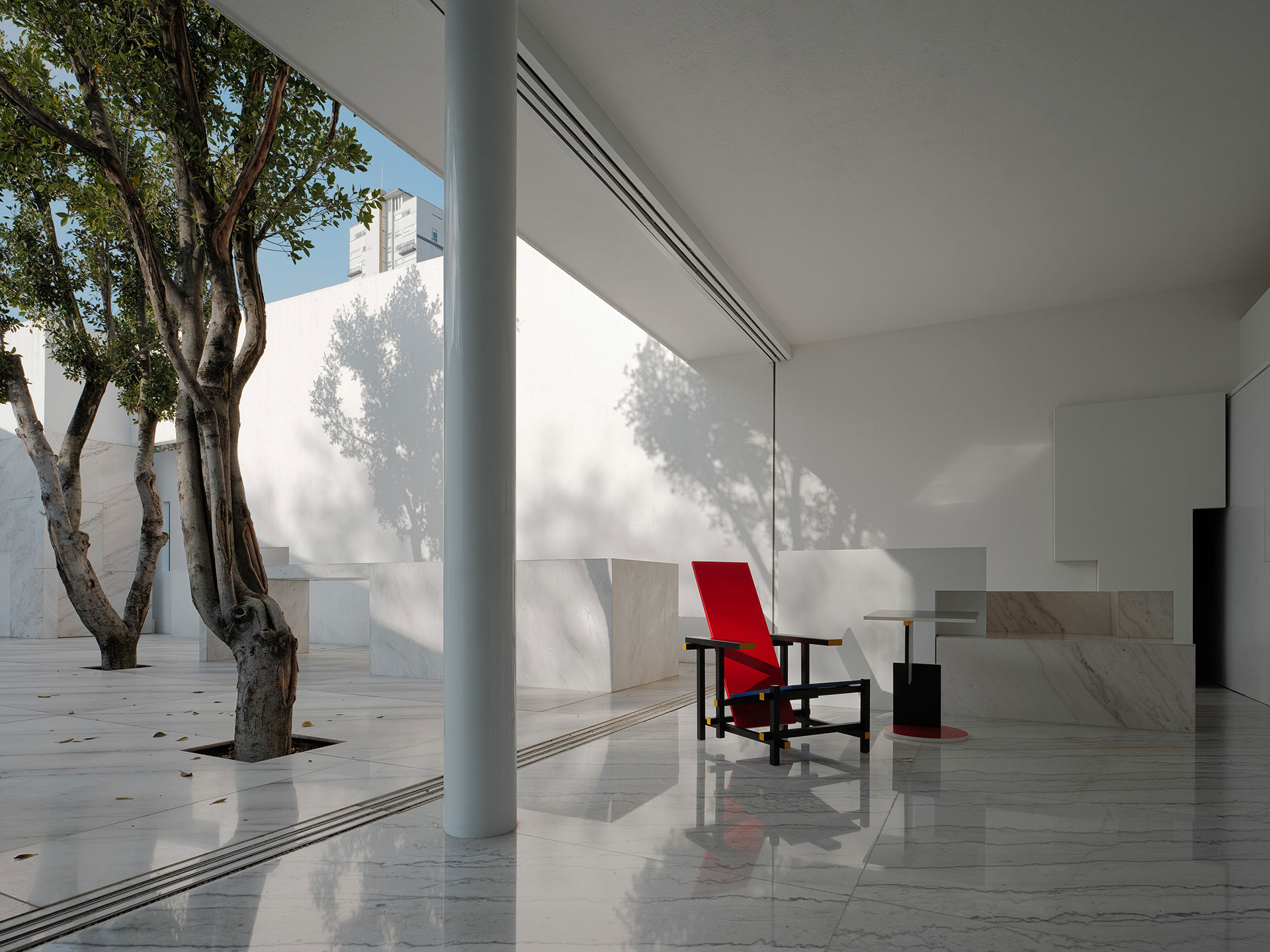
Photo by Joe Fletcher.
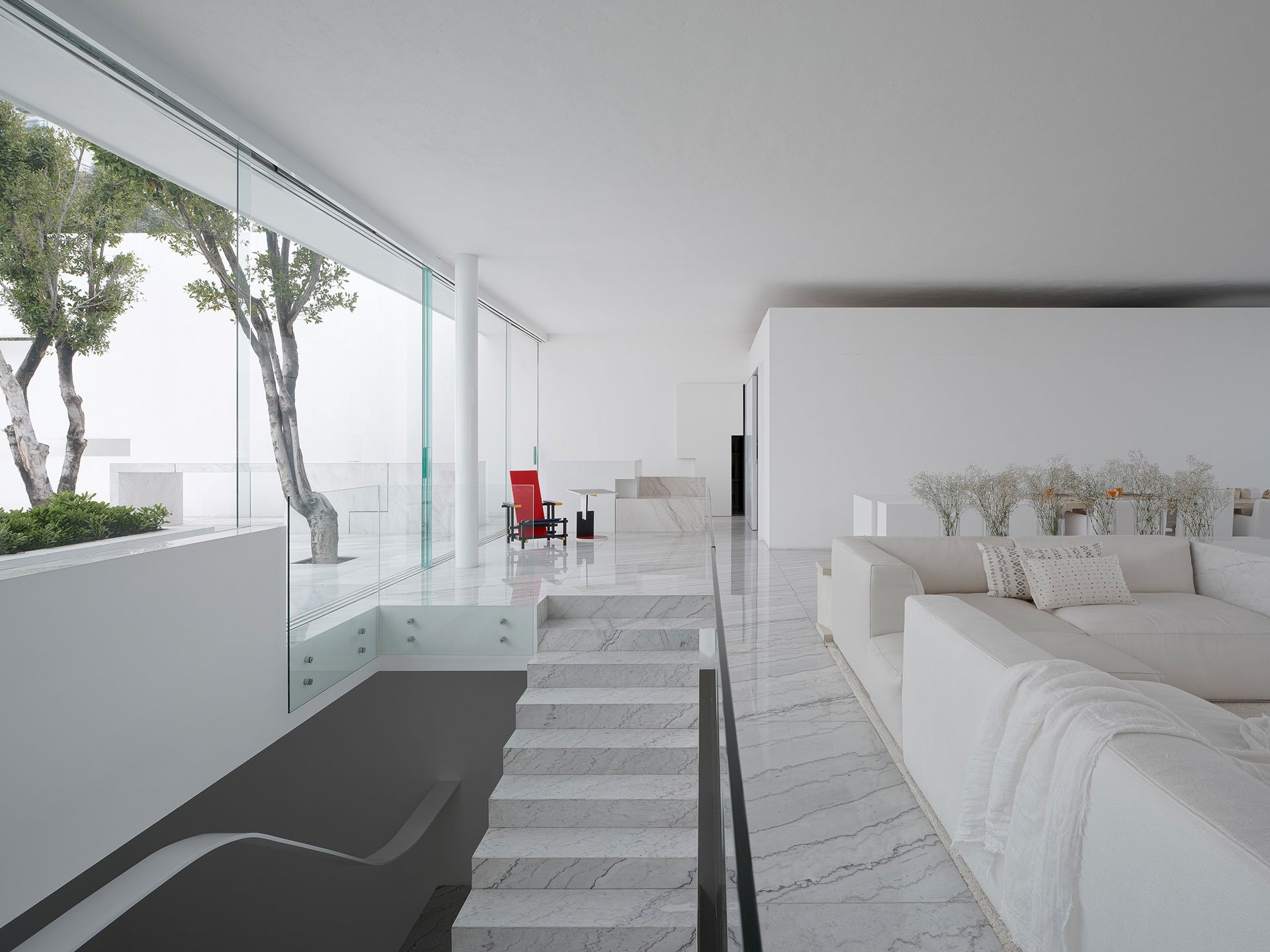
Photo by Joe Fletcher.
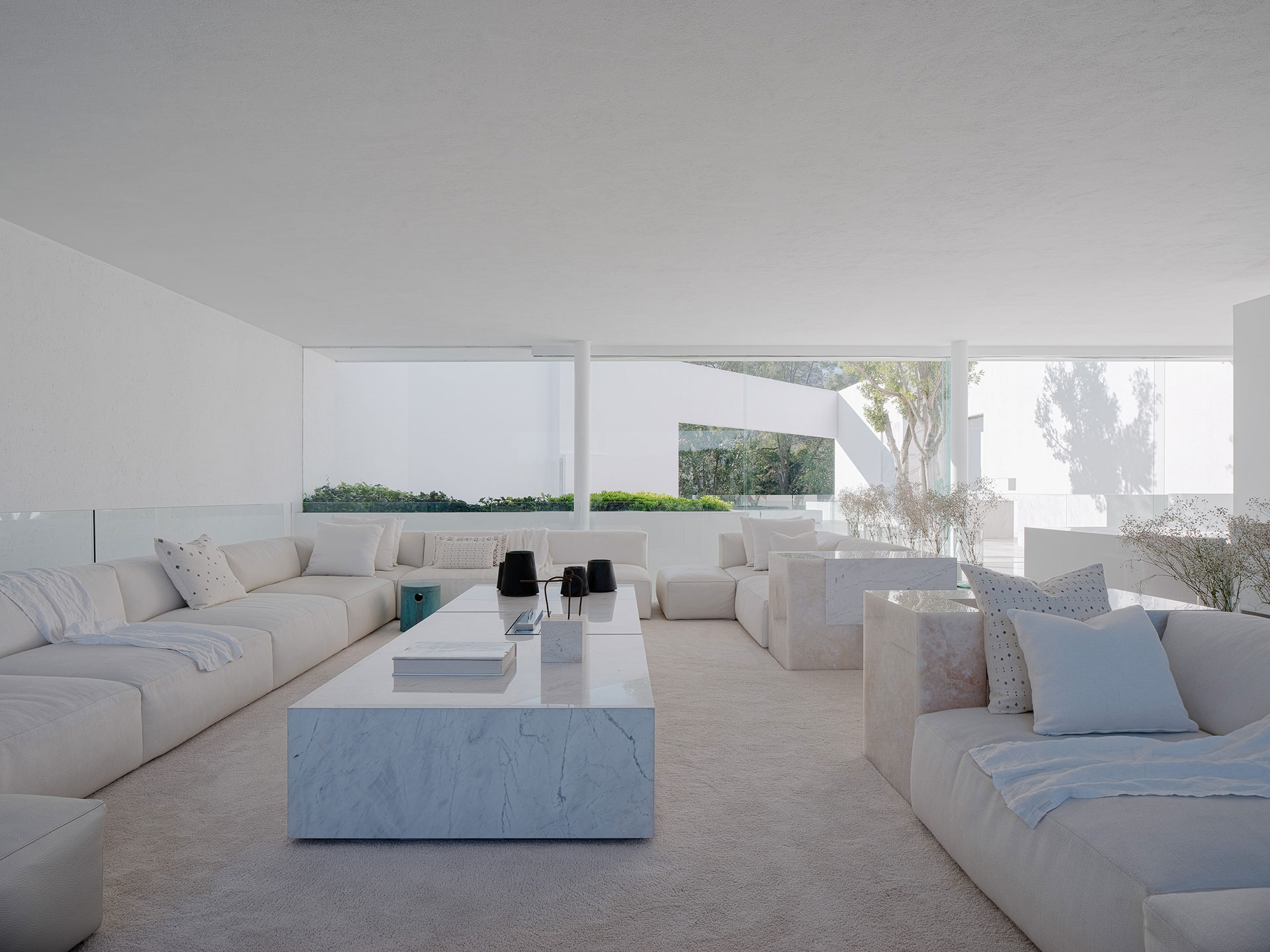
Photo by Joe Fletcher.
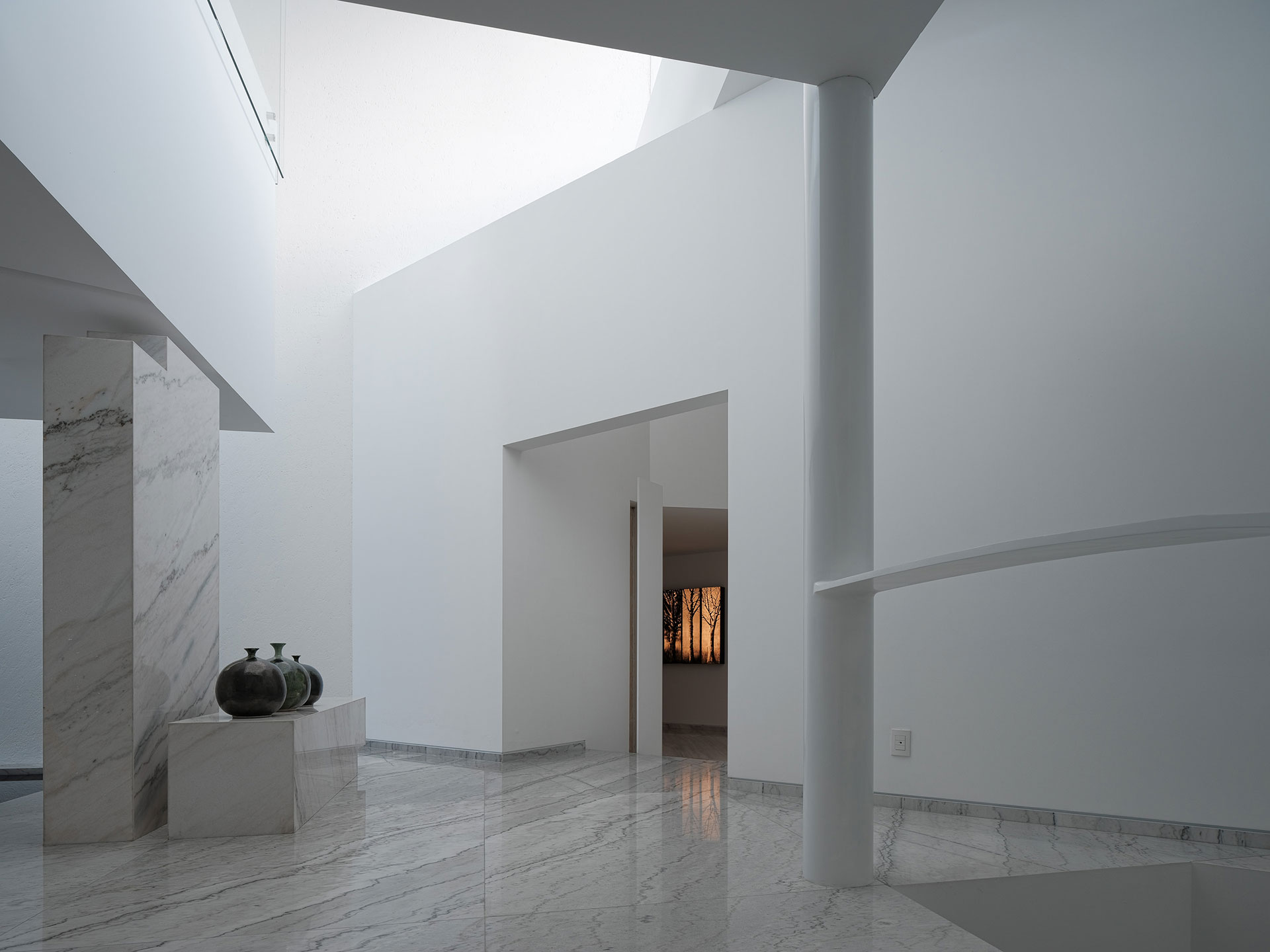
Photo by Joe Fletcher.

Photo by Joe Fletcher.
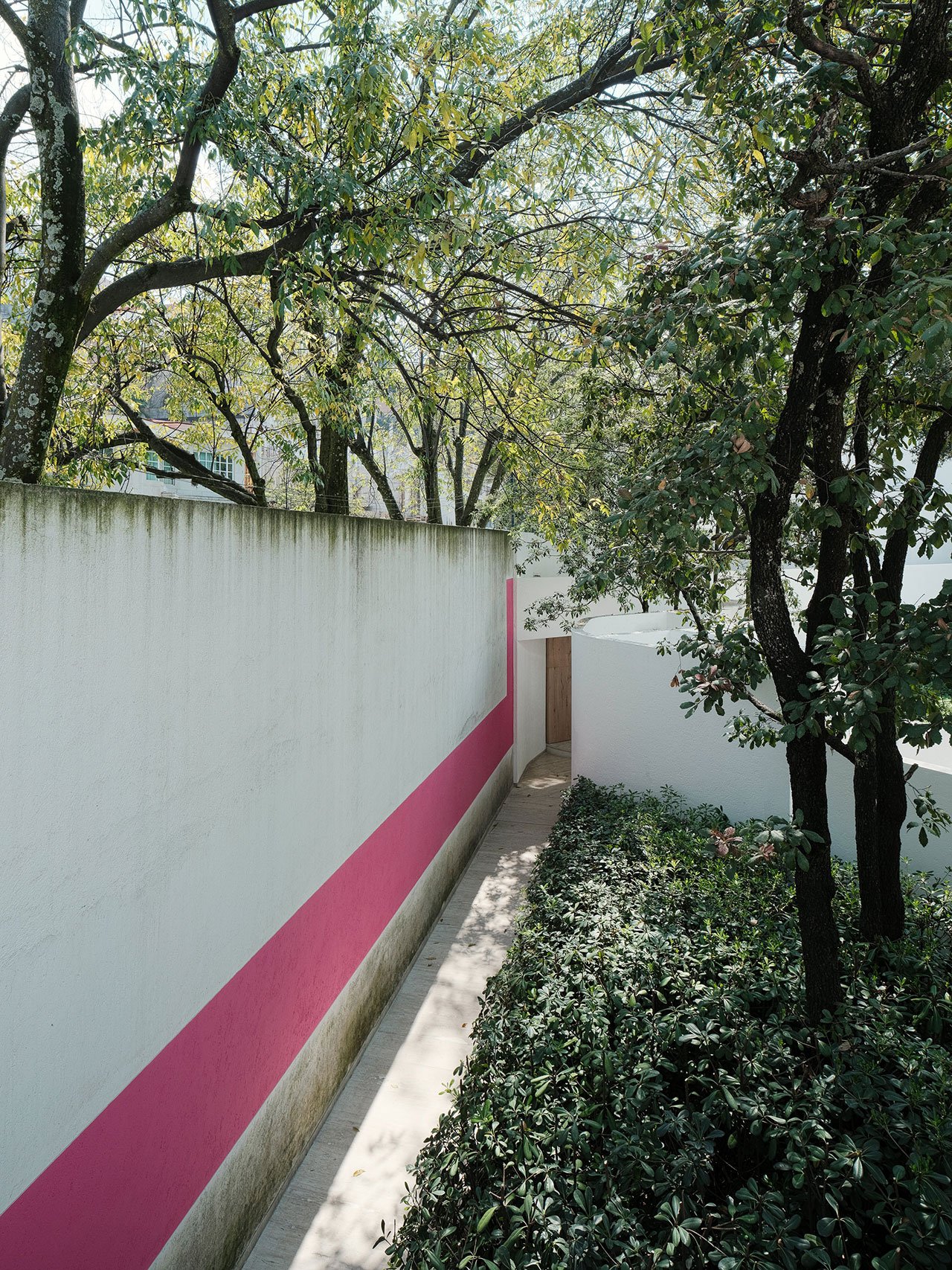
Photo by Joe Fletcher.
Most of the first floor is taken over by the master bedroom, complete with a spacious dressing room, immersive bathroom and spacious terrace, along with a family room which opens up to a sheltered courtyard dominated by a triangular pond that extends inside, blurring the boundaries between interior and exterior. Meanwhile, the main living areas on the upper level enjoy the best views in the house as well as the use of a large terrace that was designed as a continuation of the interior.
Vegetation is a precious asset in urban environments so the architects have taken full advantage of the neighbourhood’s leafy character and the property’s greenery by enabling generous views of the planted areas throughout the house thanks to strategically located, wide, floor-to-ceiling openings and a series of reflective surfaces like ponds and mirror-polished finishes. The latter not only imbue the all-white spaces with a dreamy, contemplative ambience but also allow the surrounding vegetation to visually penetrate deep into the house’s interior.
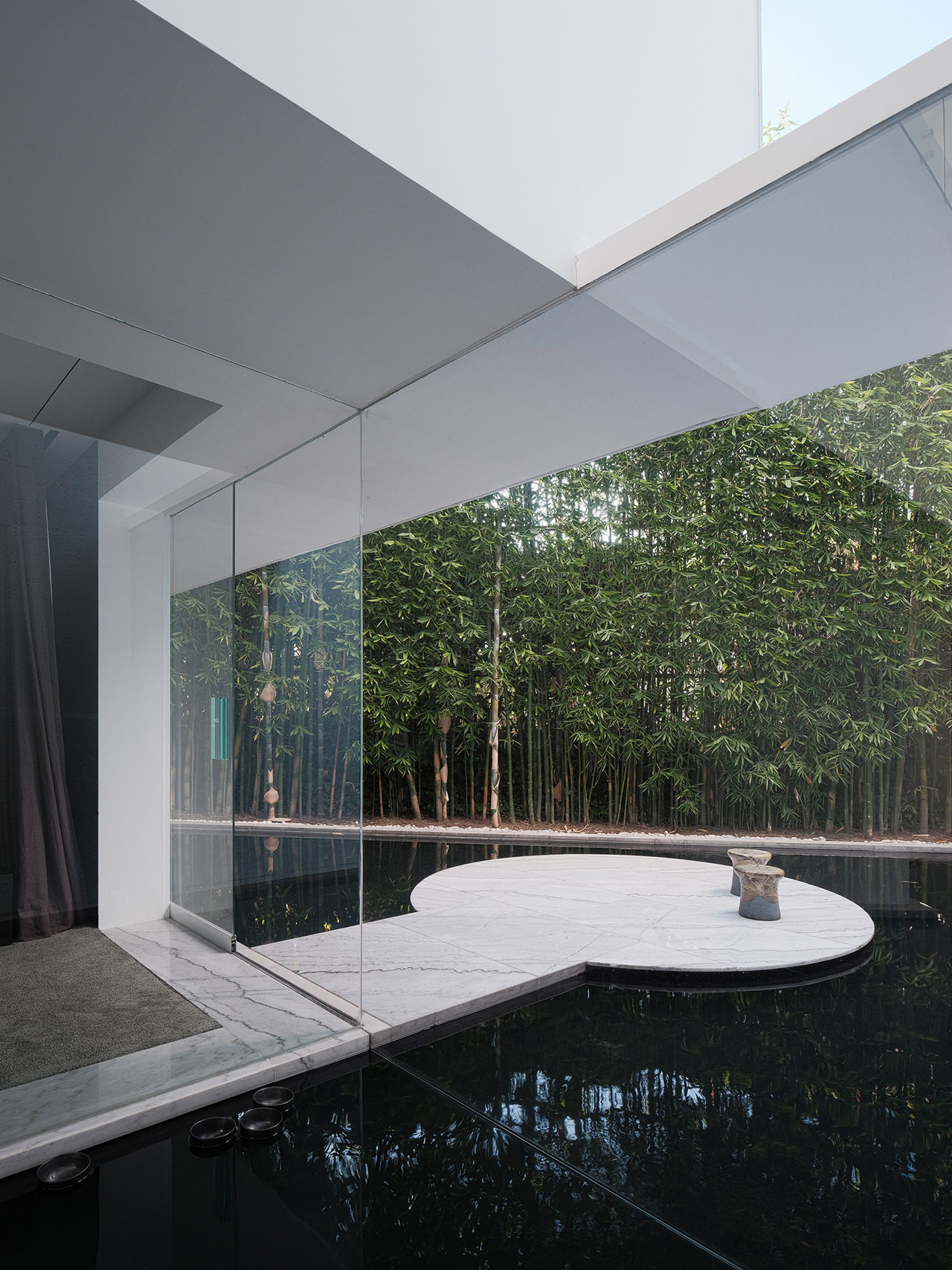
Photo by Joe Fletcher.
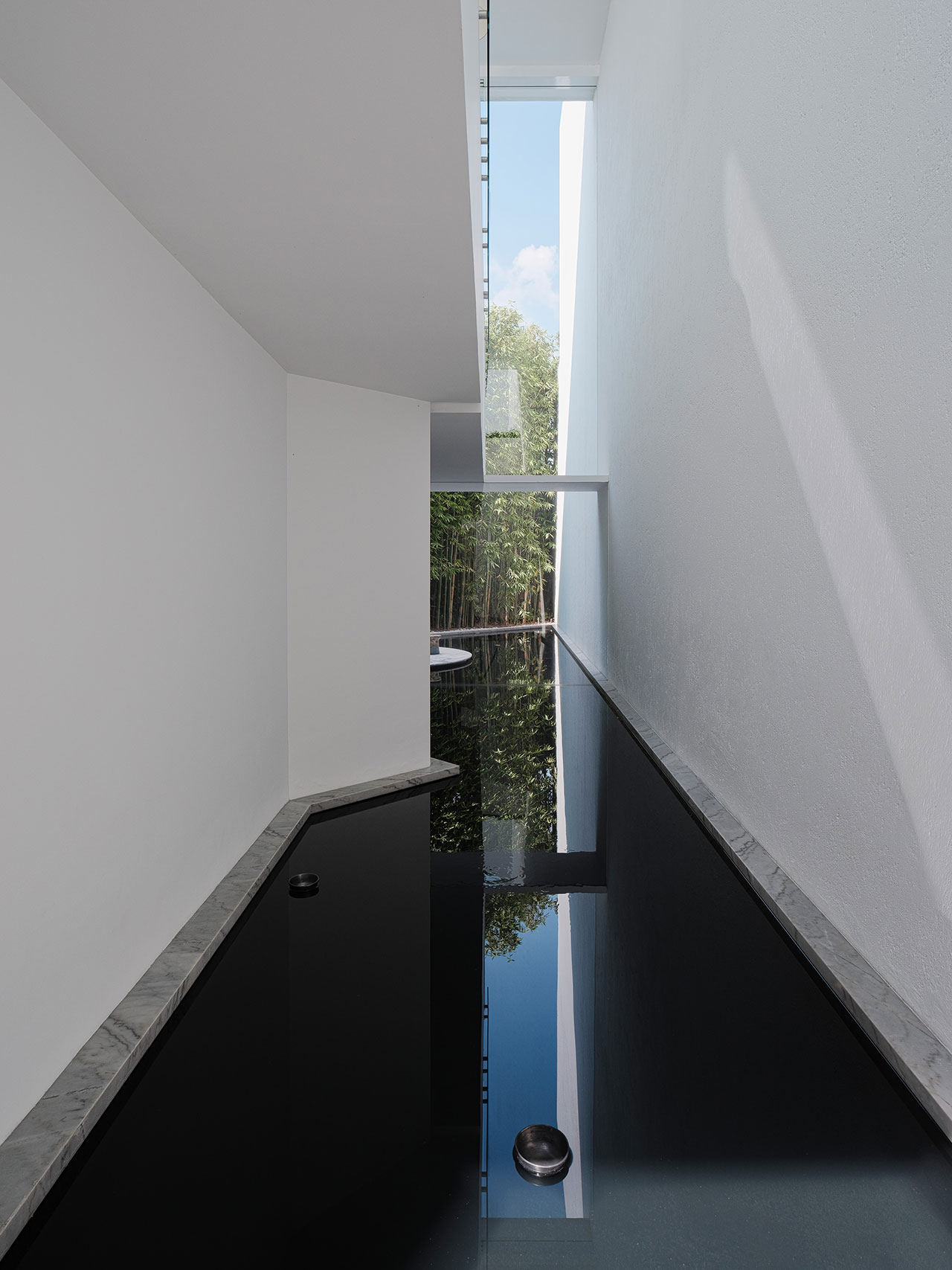
Photo by Joe Fletcher.
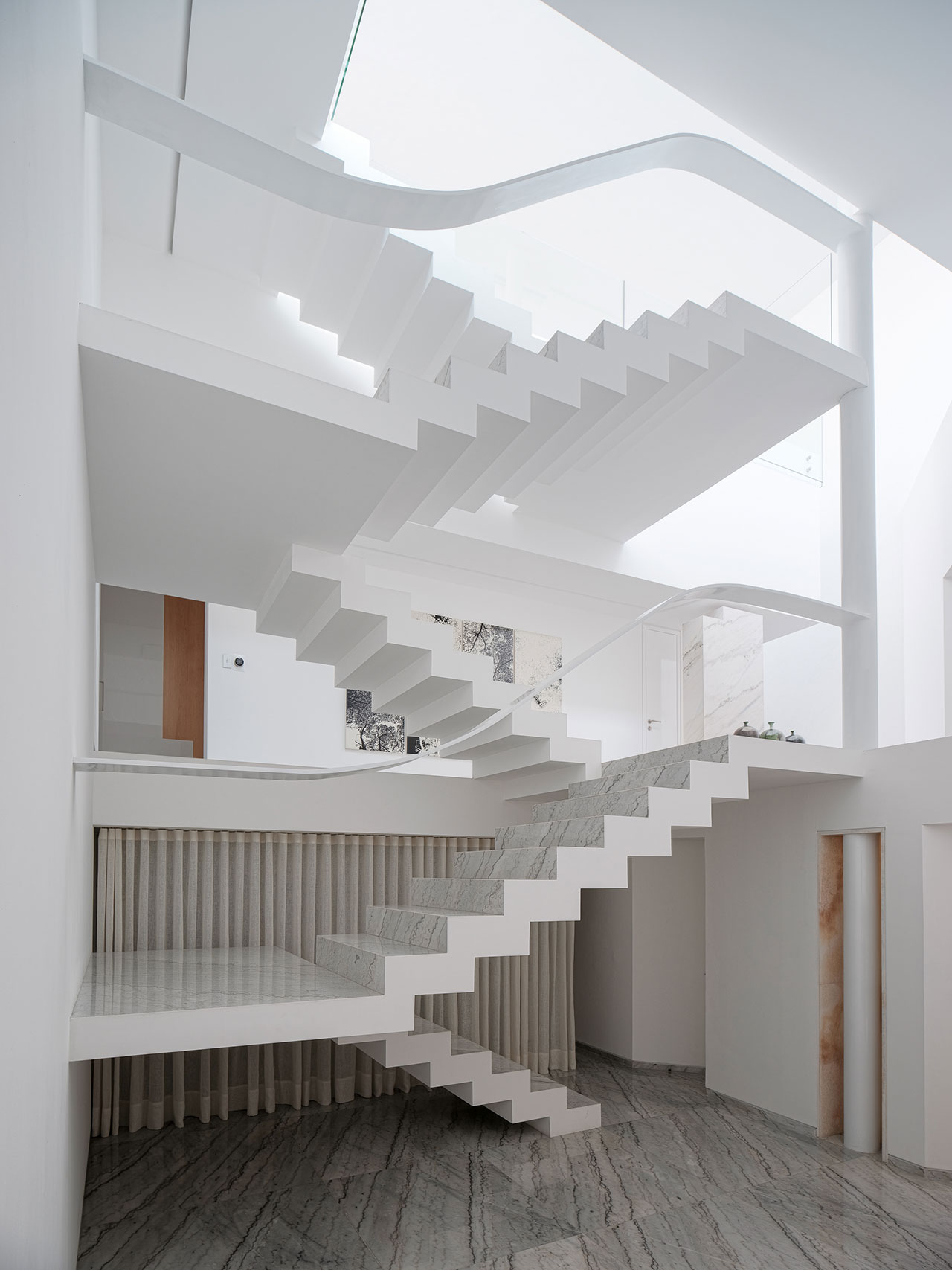
Photo by Joe Fletcher.
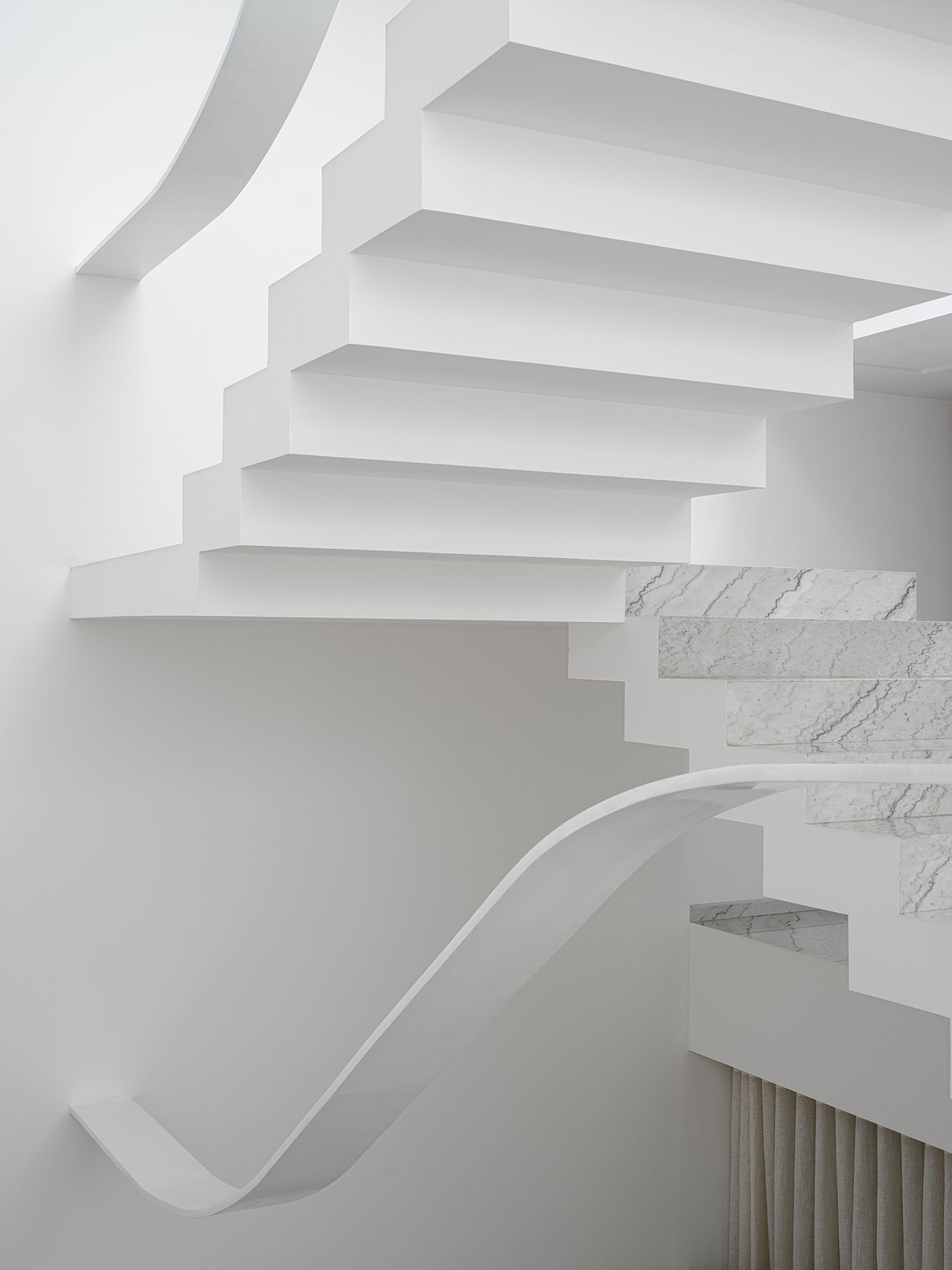
Photo by Joe Fletcher.

Photo by Joe Fletcher.
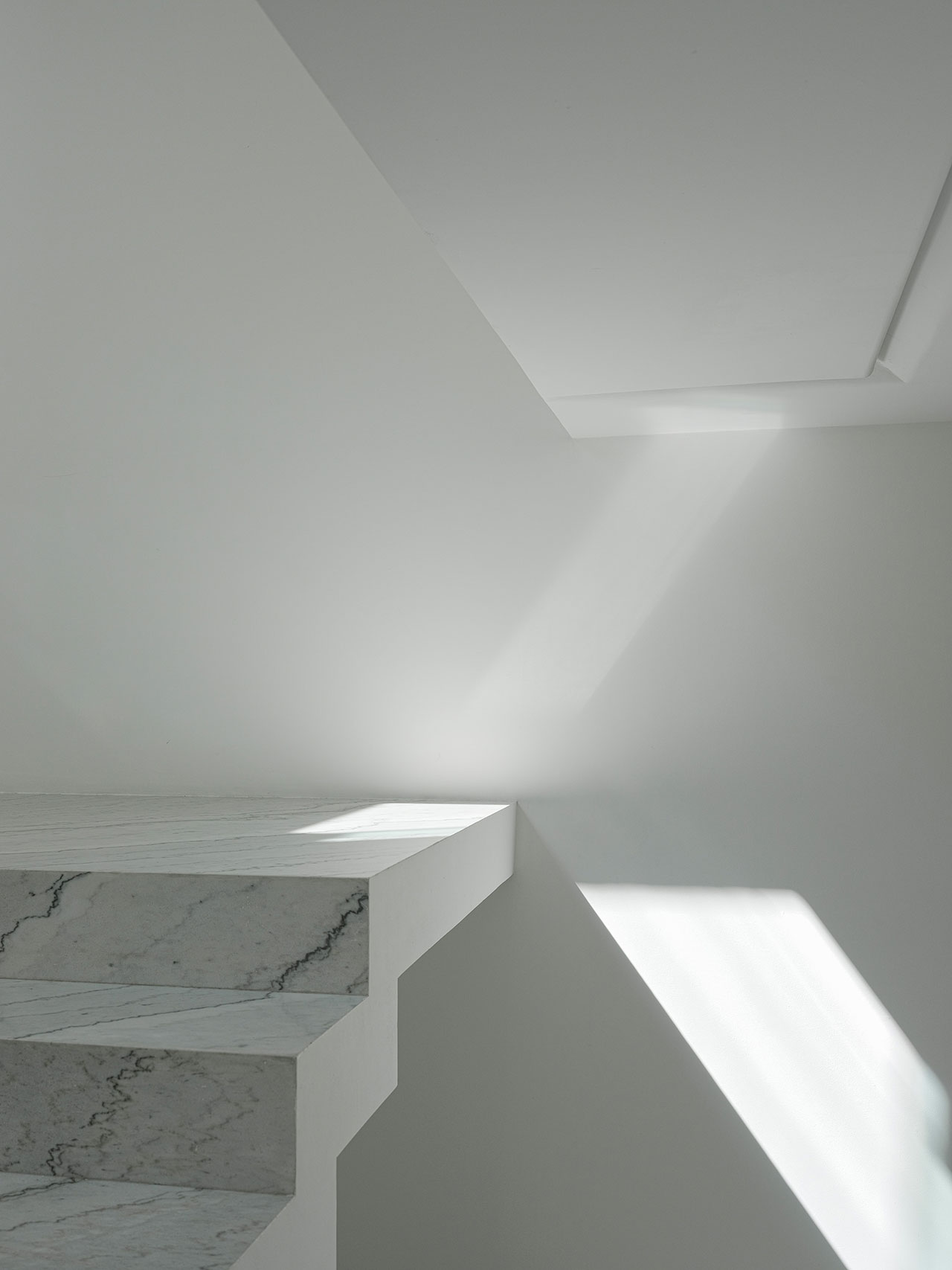
Photo by Joe Fletcher.
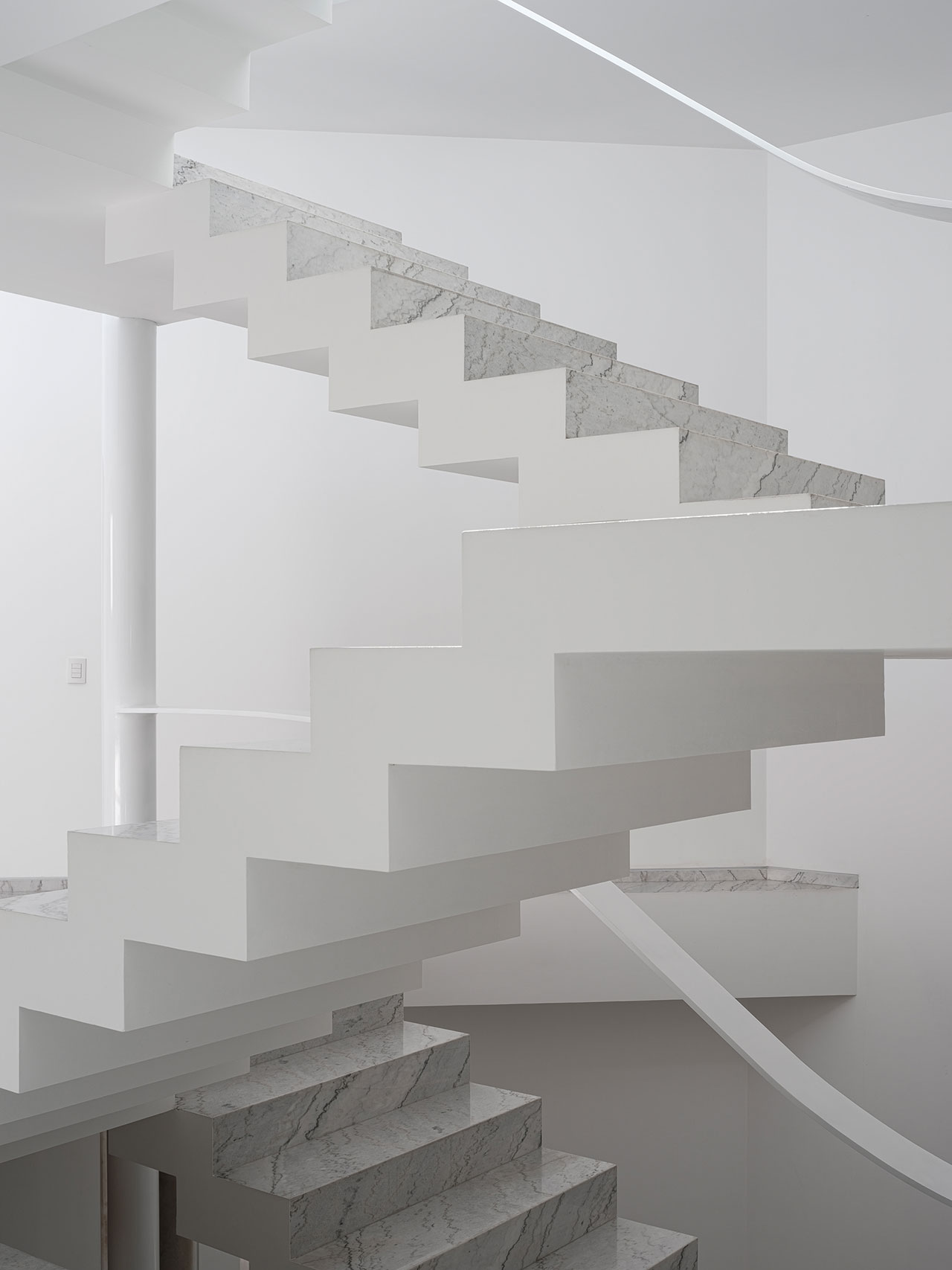
Photo by Joe Fletcher.
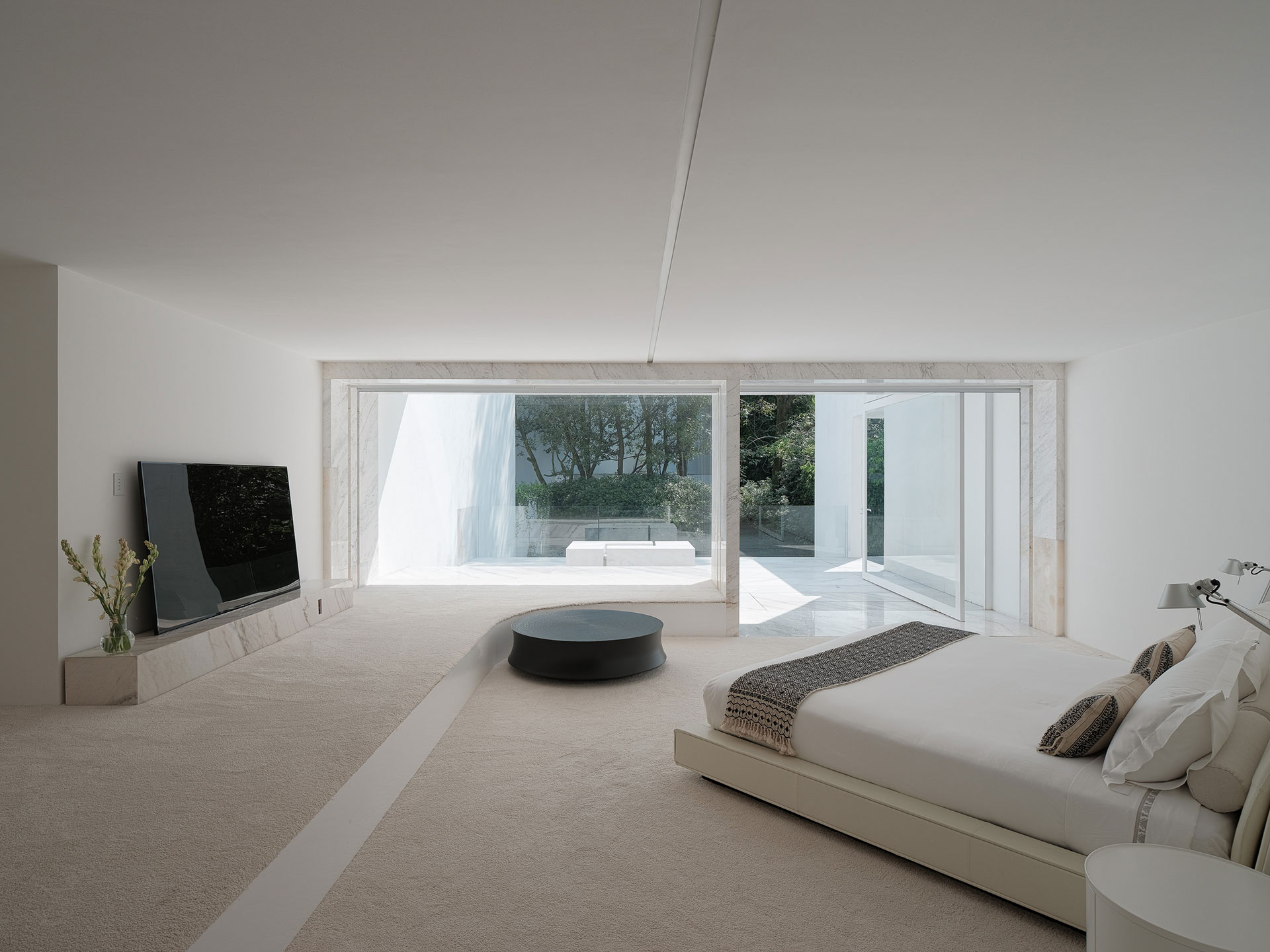
Photo by Joe Fletcher.
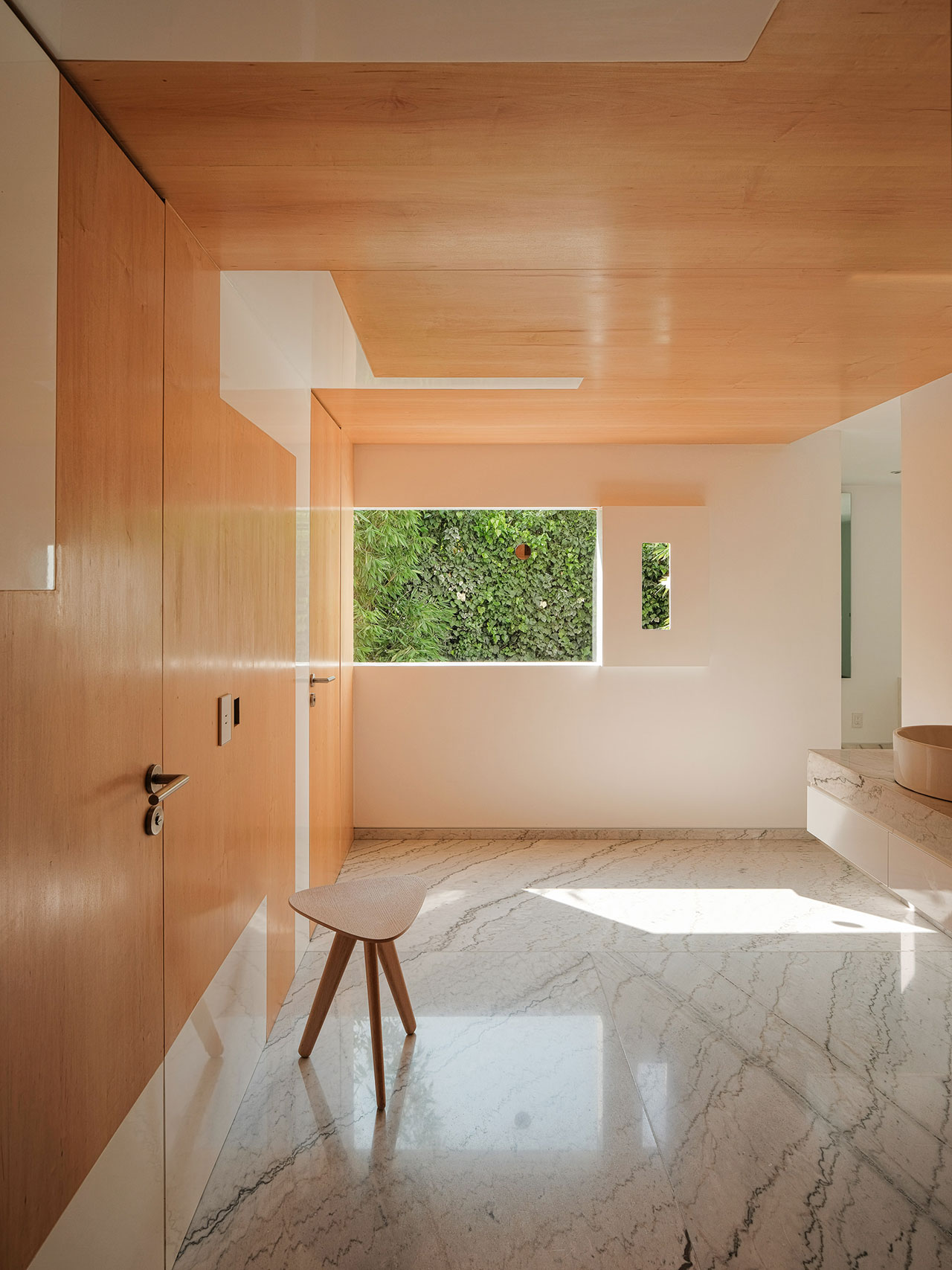
Photo by Joe Fletcher.
The interior design embraces a muted colour palette of white plaster, grey veined white marble, and cream coloured carpet, a soothing combination that cohesively unites the architecture’s abstract geometry and complex spatial configuration. What’s more, when the sun goes down, the bleached, monotone palette functions as a white canvas for the neon lighting that seductively washes the house in blue, orange, purple, pink and red hues. Bringing to mind the seminal exploration of space by artists such as James Turrell and Dan Flavin, the shifting colour scenarios subliminally urge the occupants to experience the spaces in different ways as well as establish different moods, from intimate to bombastic, and from soothing or energizing. Whatever the mood, the extraordinary thing about the house is just how evocatively it marries architectural minimalism with maximalist aplomb.
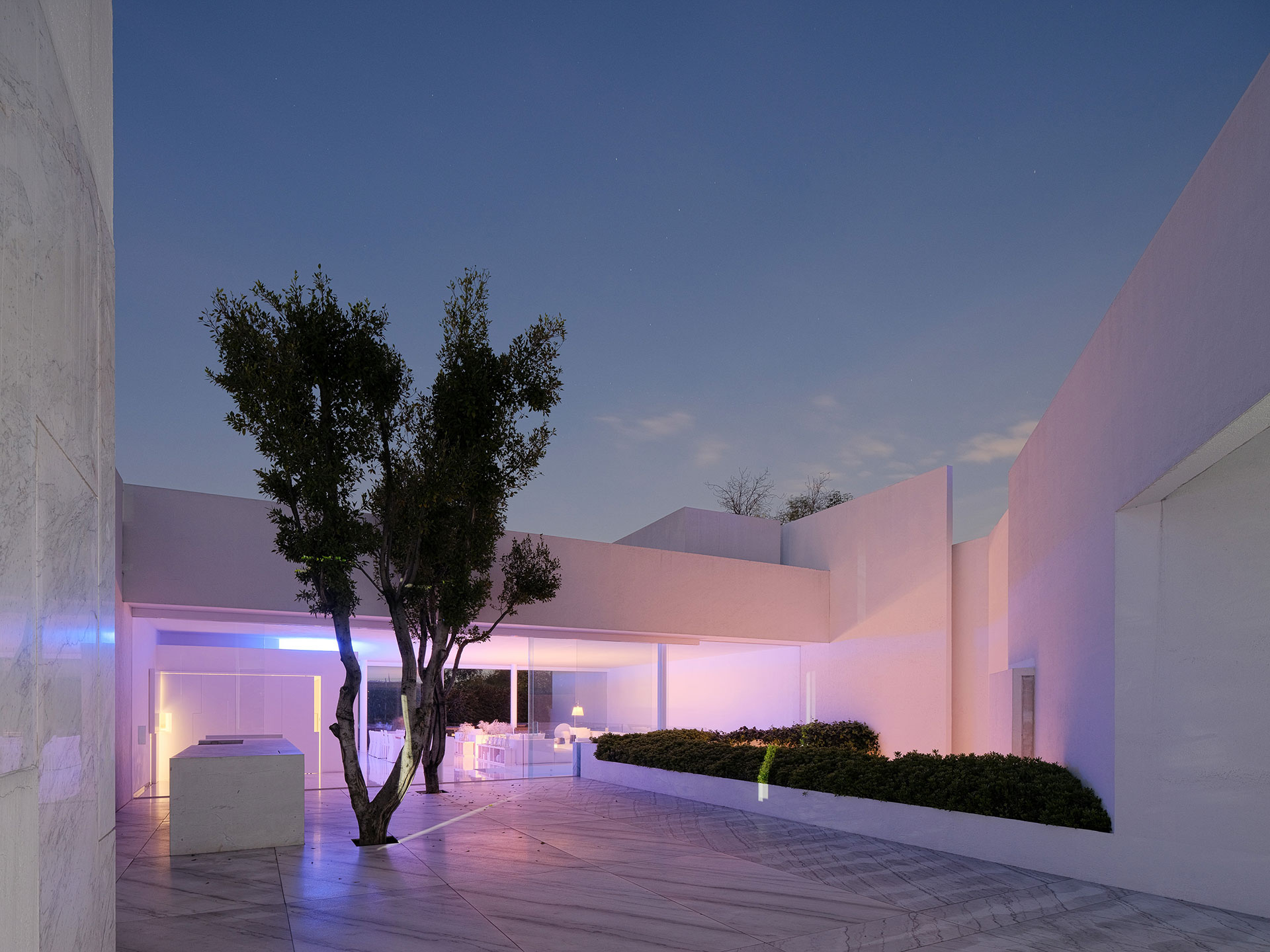
Photo by Joe Fletcher.
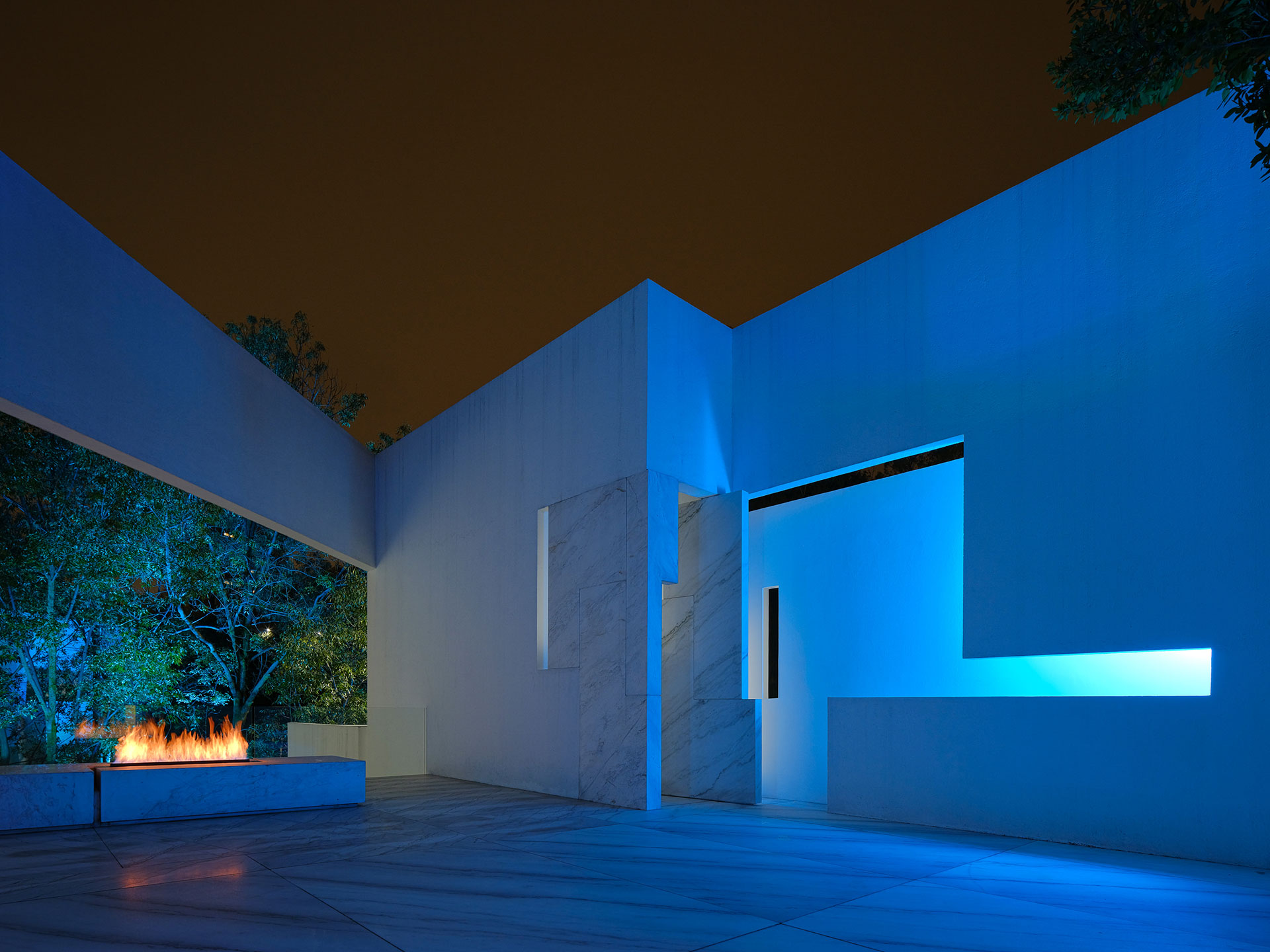
Photo by Joe Fletcher.
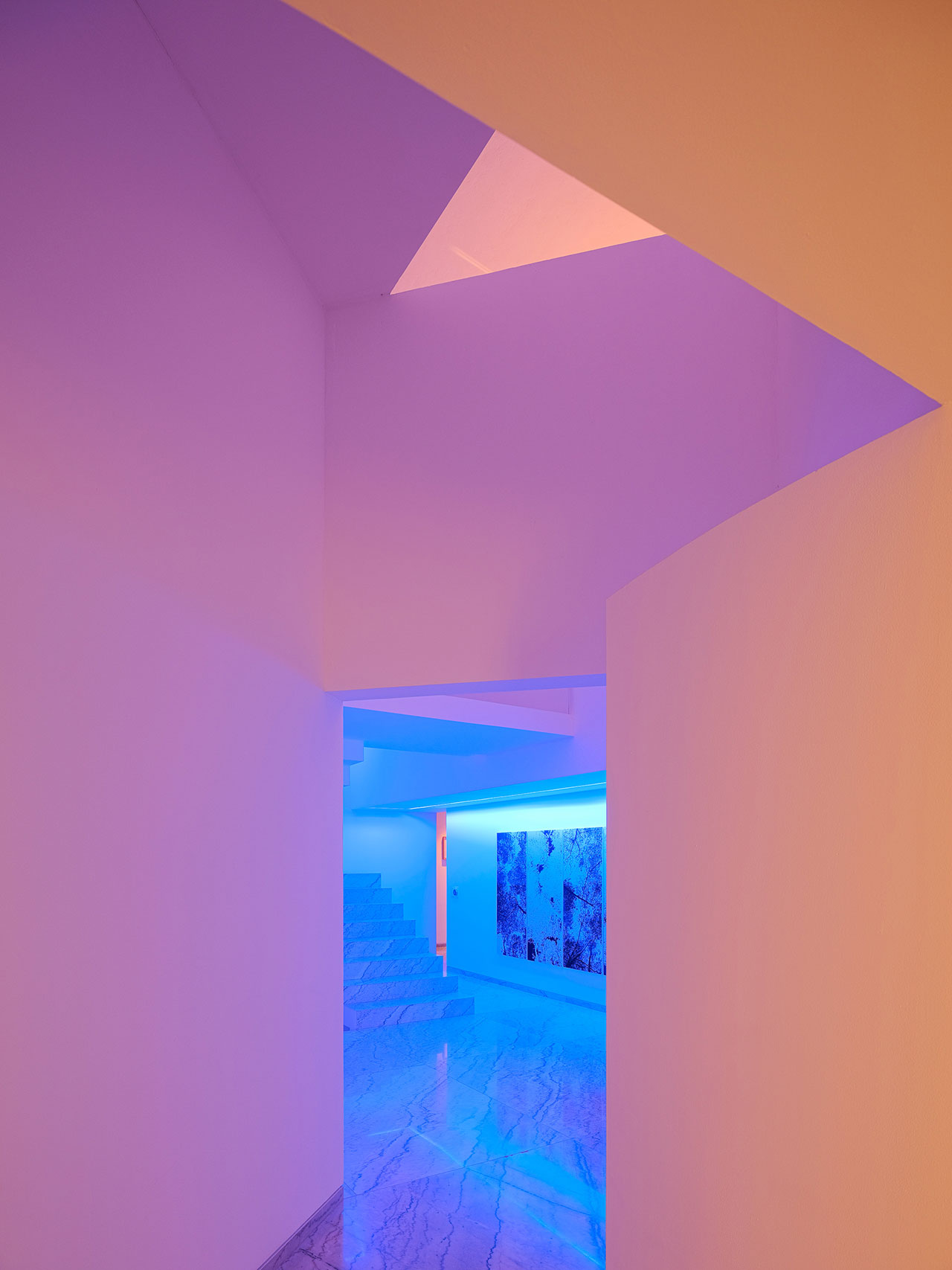
Photo by Joe Fletcher.
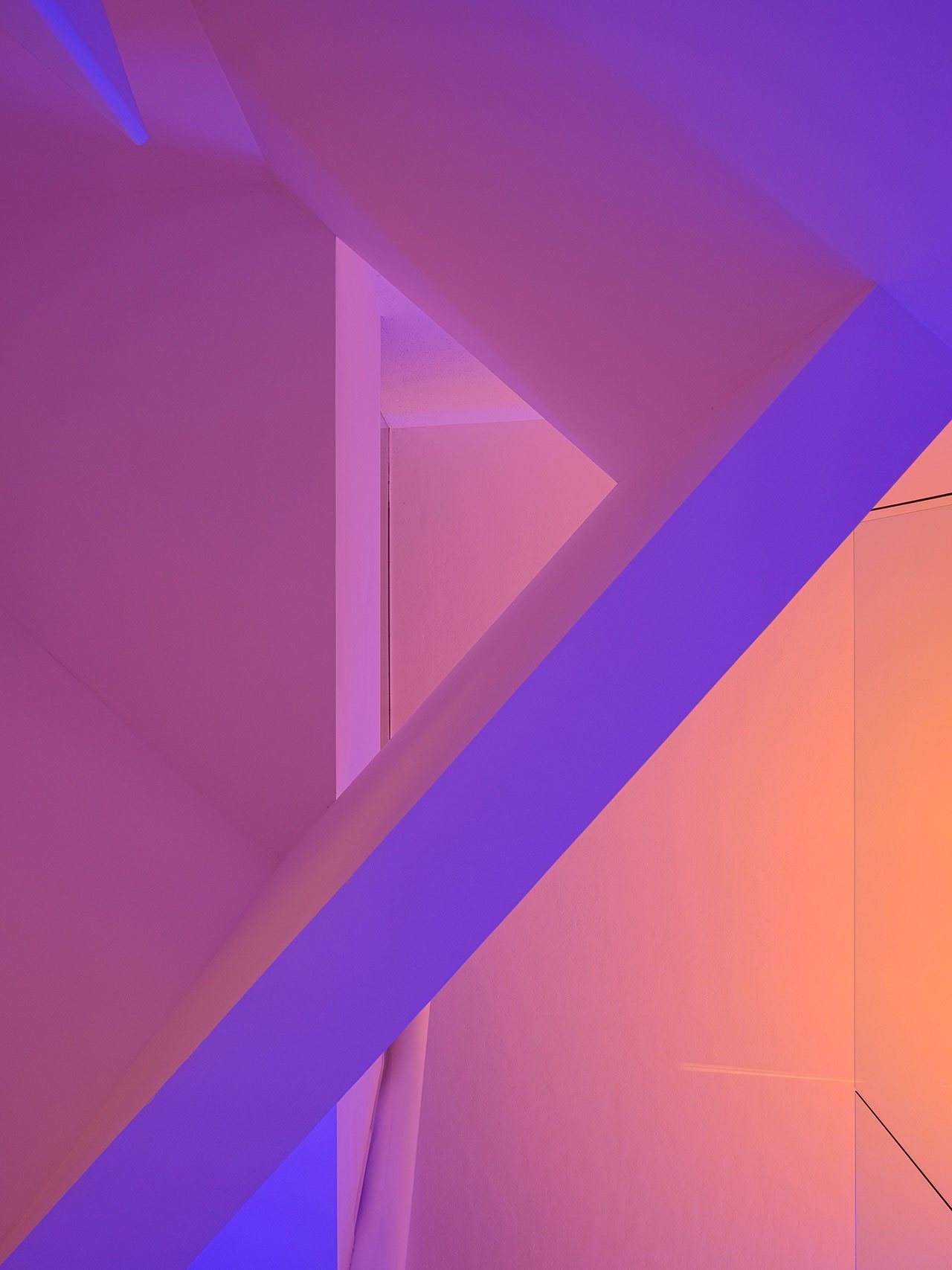
Photo by Joe Fletcher.
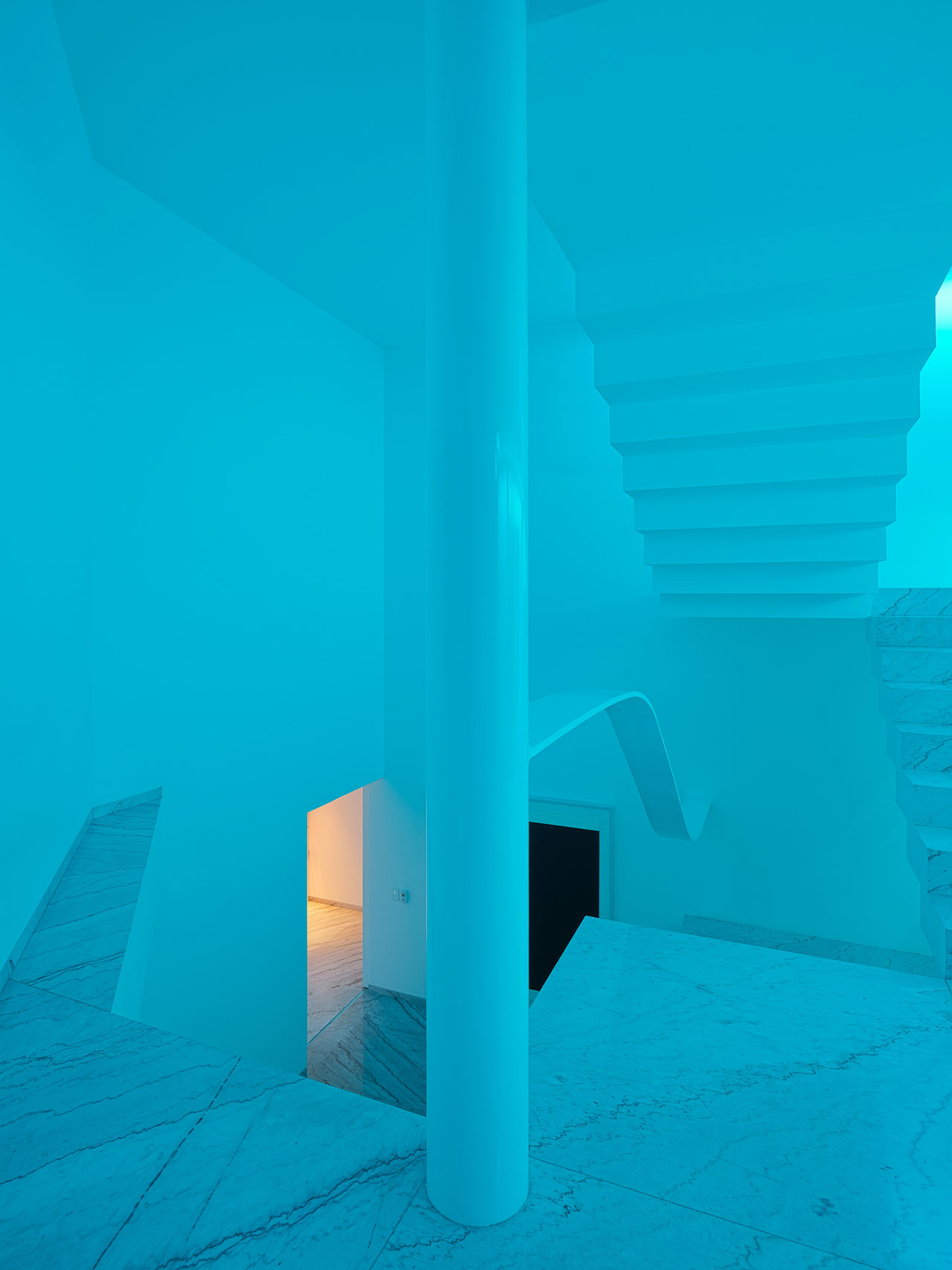
Photo by Joe Fletcher.
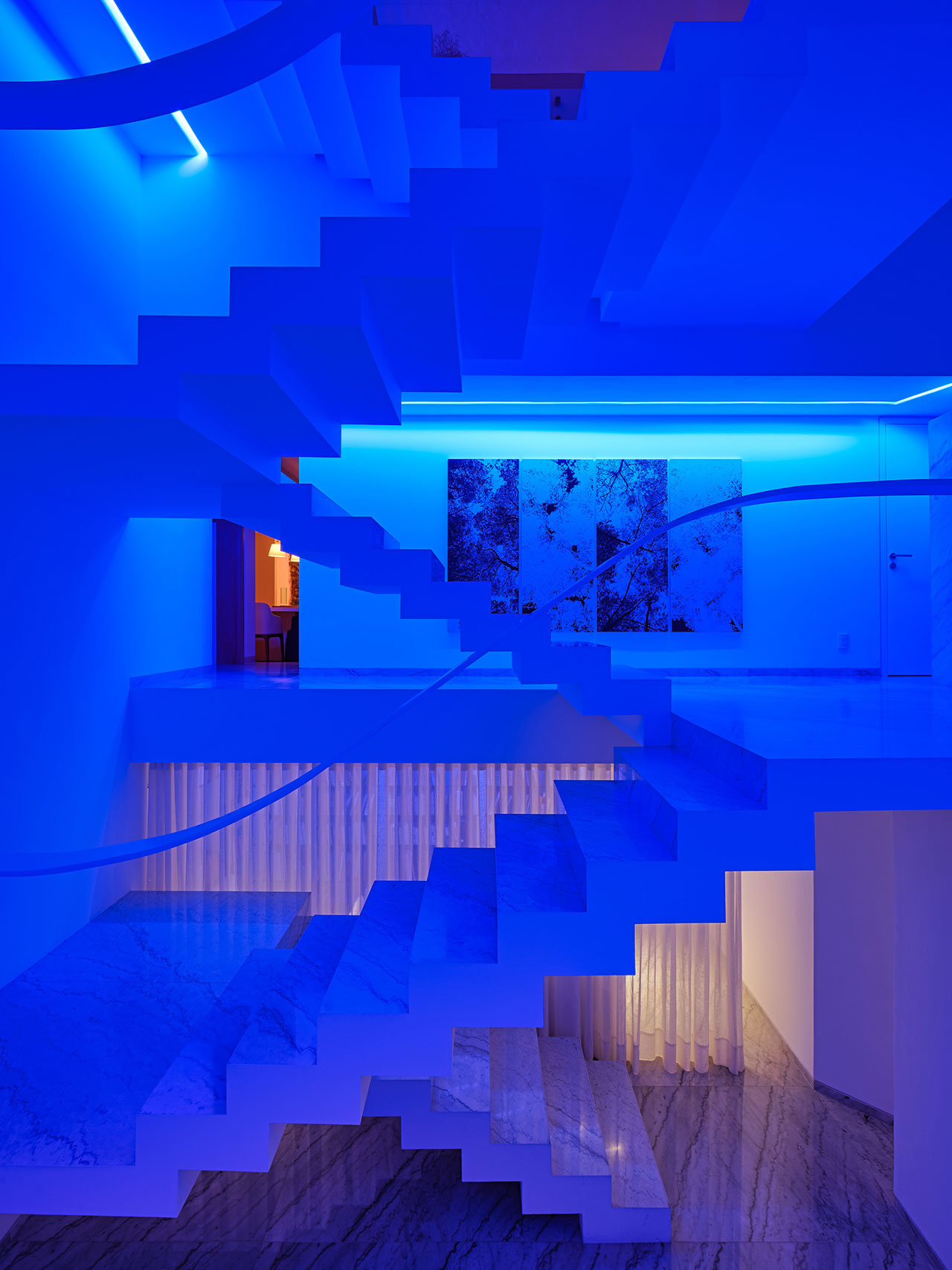
Photo by Joe Fletcher.
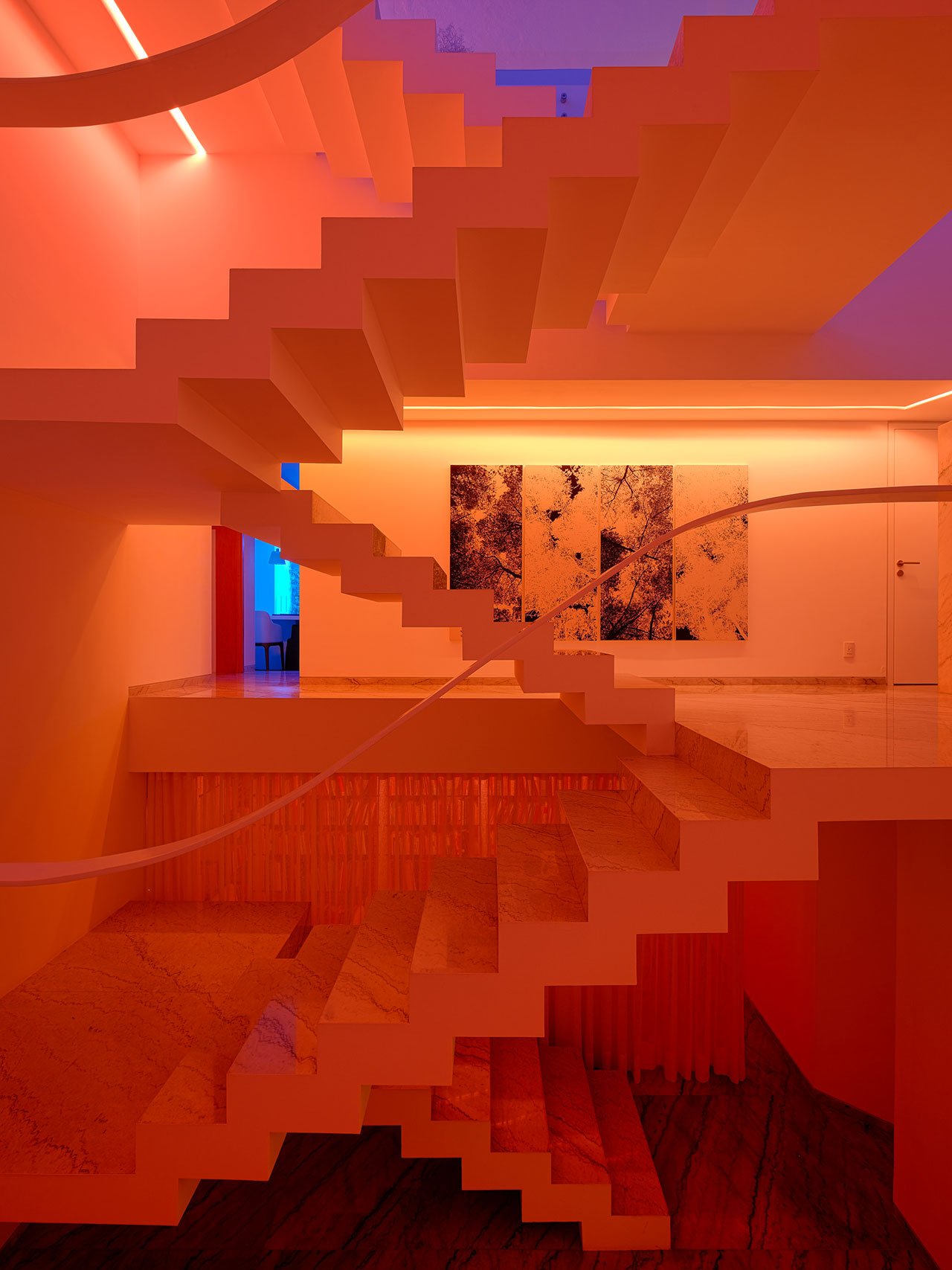
Photo by Joe Fletcher.

